KGM Actyon K60 review
The reimagined Actyon midsize SUV is vastly better than its lacklustre Ssangyong forebear. But bullish pricing and key shortcomings stymie its appeal
KG Mobility. Never heard of it? Prior to July 2025, KGM Australia was KGM Ssangyong. And prior to September 2024, the self proclaimed “oldest Korean car company”, with roots planted in 1954, was plain old Ssangyong.
That’s right, maker of the 2000s’ horrific diesel SUV-Coupe abomination, the original Actyon.
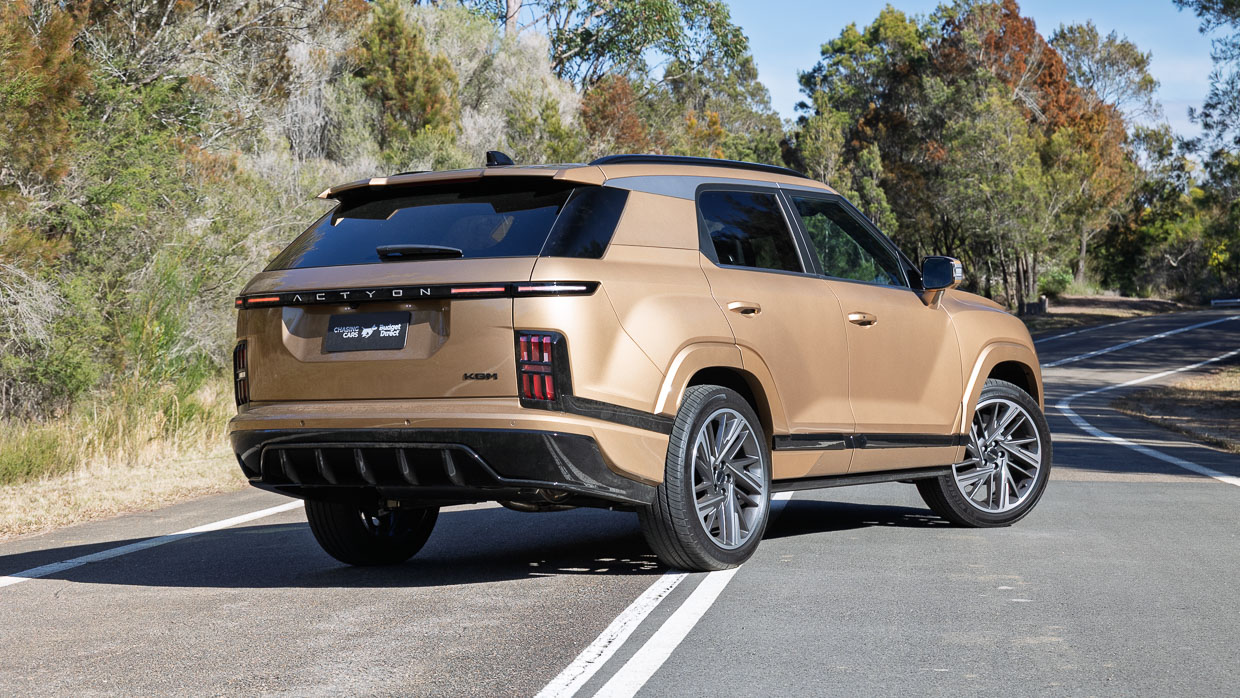
However, 2024’s rebrand coincided with the launch of the Torres nameplate: a new-era midsize SUV minted in a bold new design language, one vastly fresher than the Musso ute, Rexton large SUV and Korando, ahem, “midsize” small SUV still offered as (KGM-rebranded) Ssangyong hangovers.
Now Actyon is back, in lockstep with this year’s new KGM Australia moniker, the second — or possibly third — medium-segment SUV in the Korean line-up.
Lower, wider and less roomy than the Torres with which it shares its platform and powertrain, this Actyon bears no similarities to its critically panned predecessor…bar a spurious claim by its maker that it’s an “SUV-Coupe”.
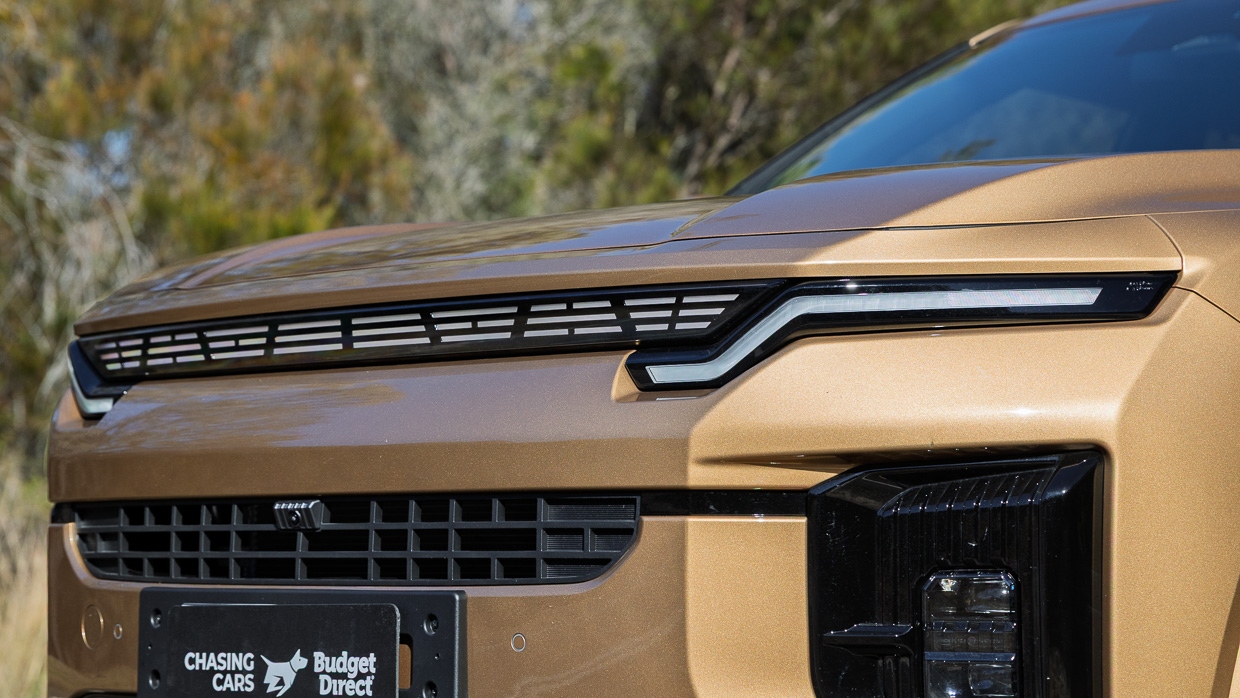
It’s not. It’s a wagon. If one priced and positioned above its stablemates and, at $50,000 driveaway for the higher-grade K60 on test here, bullishly priced against the likes of Toyota RAV4, Mazda CX-5, Hyundai Tucson, Mitsubishi Outlander…the list goes on and on.
While $50K on-road won’t get you to flagship variants of this segment’s most popular choices, stalwart nameplates offer a variety of powertrain choices — including hybridisation and all-wheel-drive options — for similar money. The
Actyon, in two trim levels, makes do with 1.5-litre turbocharged front-drive motivation only.
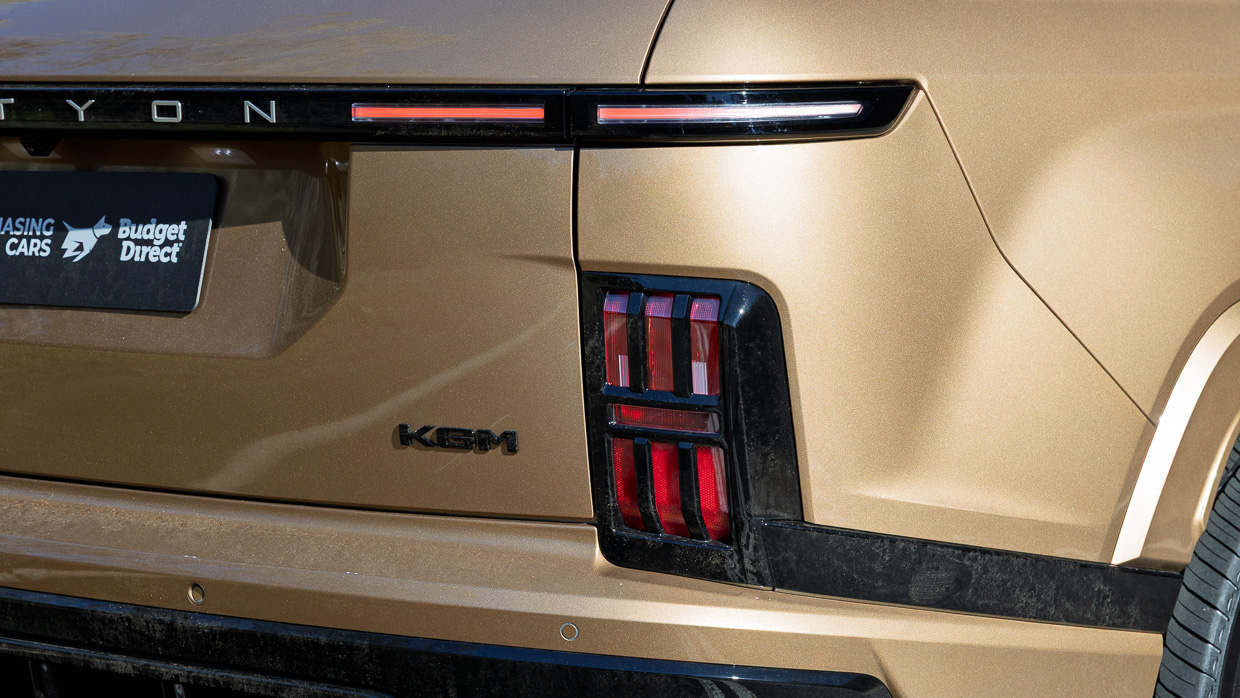
Further proof of work cut out for a challenger brand with its challenger model is the influx of electrified and fully electric Asian choices, some in flagship guises, at the same pricepoint or less.
But even a cursory glimpse at the reimagined ‘Actyon 2.0’ reveals an inimitable competitor that’s bold in style, brimming with standard features, aspirational in its luxury ambitions and a seemingly interesting genuine alternative in what can be, in some corners of its segment, a generic, homogenised and sometimes patchy landscape.
What are the Actyon K60’s features and options for the price?
The MY26 Actyon lineup kicks off at $44,500 list, or $47,000 driveaway, for the base K50 variant. The flagship K60 on test is priced from $47,500 list or $50,000 driveaway.
By comparison, the slightly smaller — 4740mm plays 4700mm — Torres it shares its platform and sole front-drive powertrain with spans $35,700-$44,500 list. Unlike Actyon, the three-variant Torres line-up includes the choice of front or all-wheel drive.
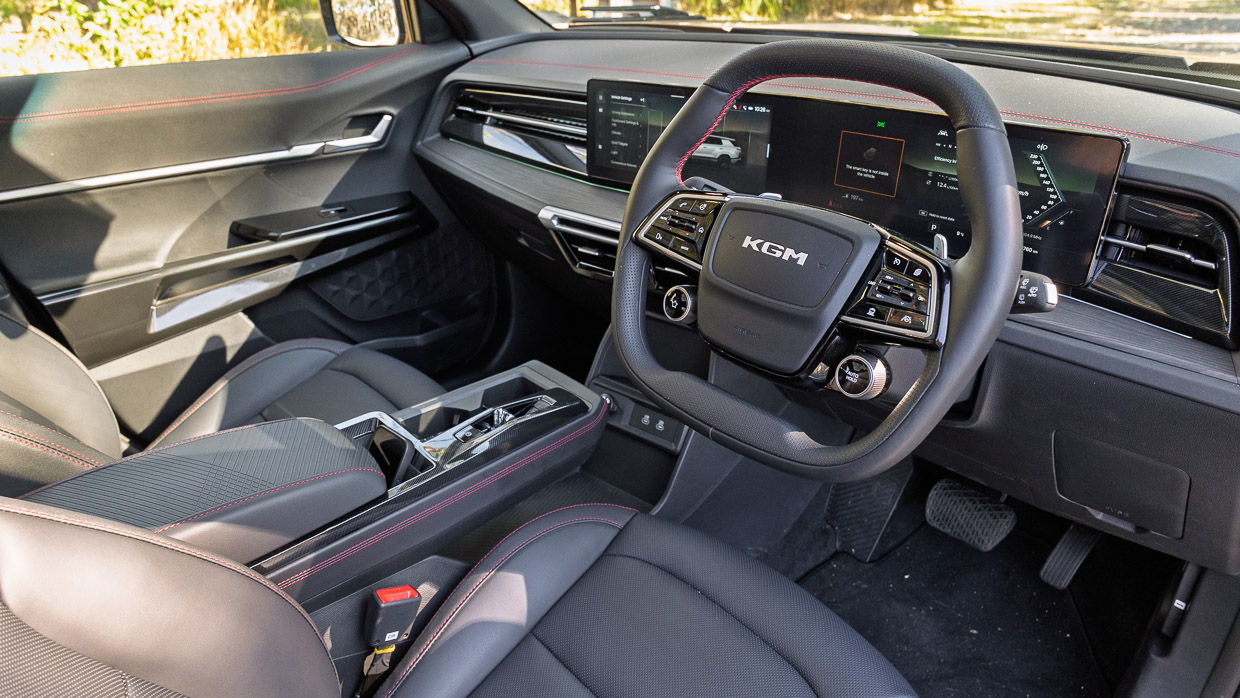
Standard features for the Actyon K50 include:
- 20-inch allow wheels with Michelin rubber
- LED headlights, DRLs and tail lights
- Nappa leather trim
- Eight-way front (with two-way driver lumbar) electric seats
- Seat heating (both rows) and ventilation (first row)
- Dual 12.3-inch driver and media displays
- Dual-zone climate control
- Heated multifunction steering wheel
- Reversing camera with front and rear parking sensors
- Wired Apple CarPlay and Android Auto
- Interior mood lighting
- 4 x USB-C outlets
- Rear privacy glass
- Powered tailgate with hands-free operation
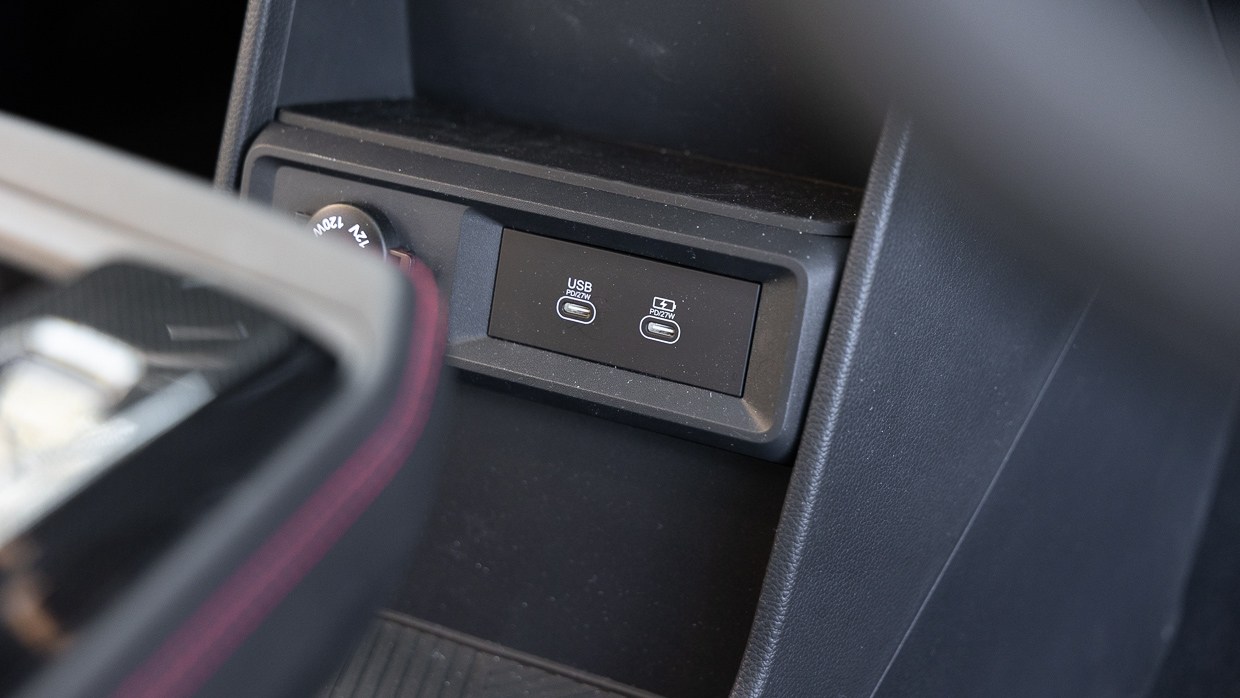
The flagship K60 adds:
- 360-degree camera system
- Panoramic sunroof
- Rear door sun blinds
- Wireless phone charger
The Actyon is offered in five colours, with every option outside of Grand White — including our tester’s Royal Copper metallic — commanding a $700 upcharge.
Unusual omissions from the features list include the lack of wireless phone mirroring and proprietary sat-nav in the media system.
How does the Actyon K60 drive?
With its architecture trickled down from (2019 vintage, 4410mm) Korando by way of a slightly (4700mm) shorter Torres, the Acyton — launched globally in 2023 — has well worn underpinnings.
So plenty of mileage in this platform and powertrain to iron out the rough edges, then…
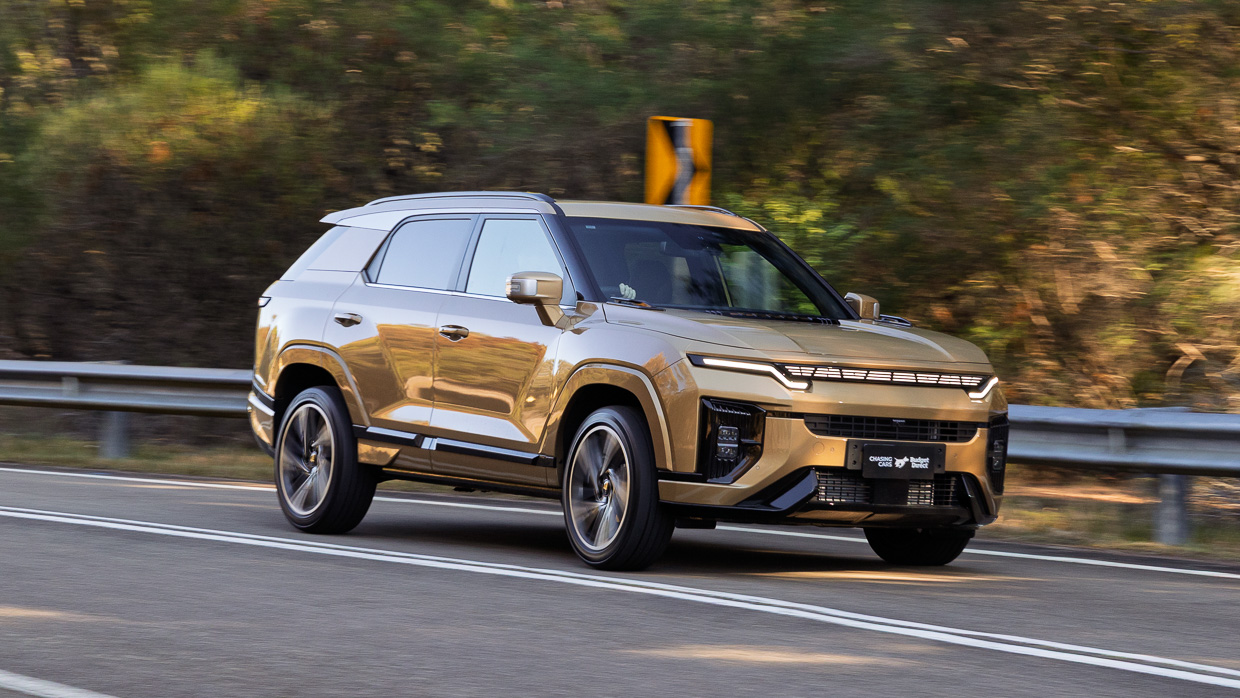
It fits a 120kW and 280Nm 1.5-litre turbocharged four and Aisin-sourced six-speed automatic, largely technically common amongst all three of KGM’s midsize SUVs, with Actyon exclusively front-drive despite being offered in AWD guise overseas (and in Torres).
The result is a bit of a mixed bag.
All 280 newton metres clock on from 1500rpm. The upshot? It’s surprisingly urgent off the mark, to the point where its well regarded and fairly grippy Michelin tyres are tasked for traction, especially when attempting to lunge from a side street into moving traffic, or in any situation where the surface below is wet or broken.
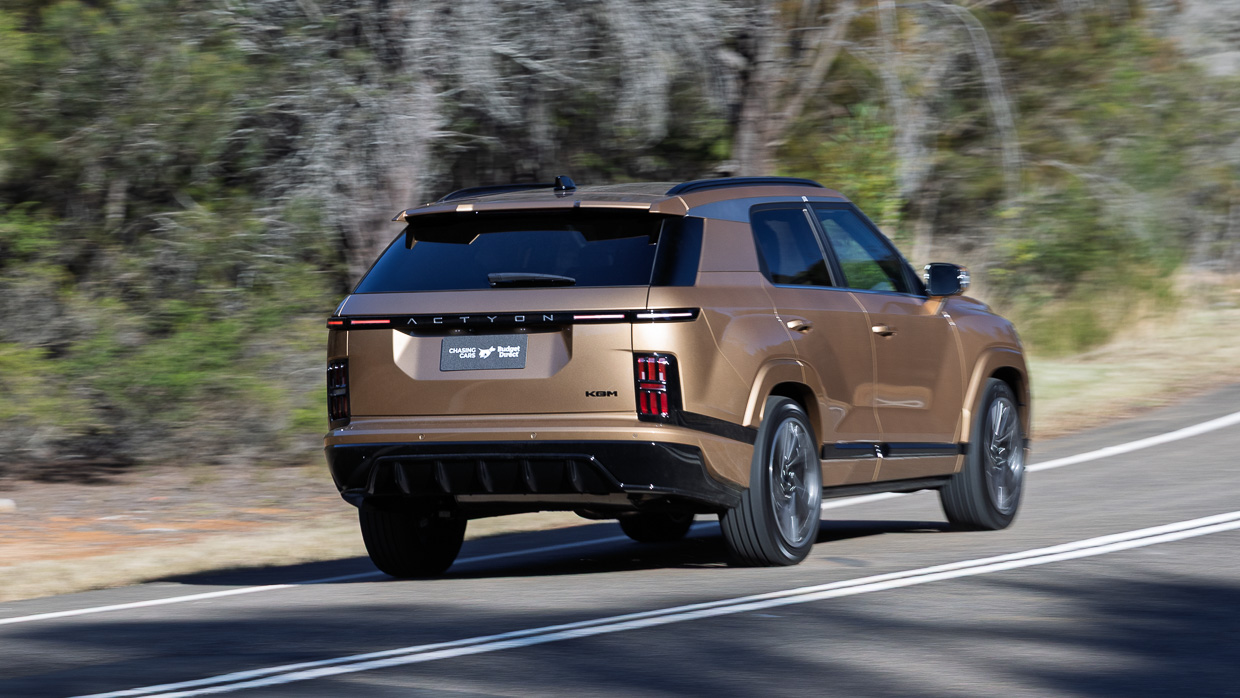
Thing is, there’s no staying power in the midrange. On the move, when tasked with overtaking or merging, there’s not enough torque to follow through, which isn’t unusual for a hard-working engine that’s a little too undersized for the task at hand.
Not helping its cause is the slight recalcitrance of the engine and transmission marriage.
There’s a pause in the auto’s upshifts that becomes more pronounced the more you dig in with your right foot, which makes smooth progress a matter of concentrated throttle input. More so than it needs to be.
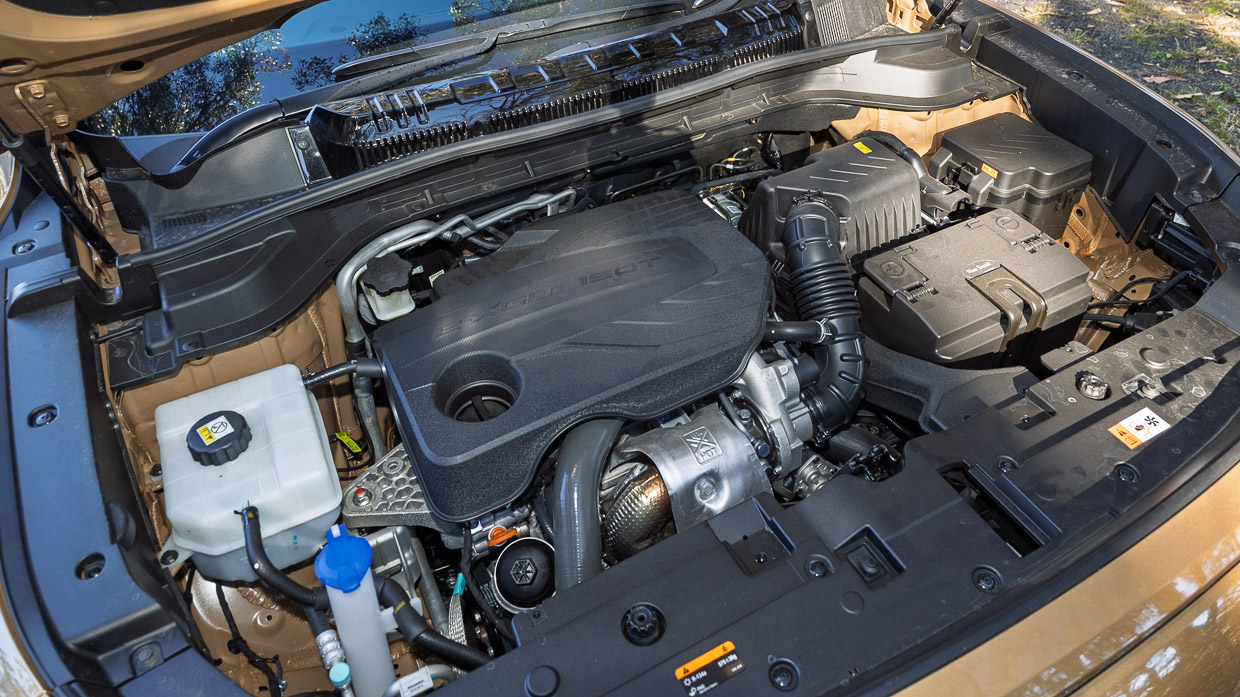
While the Actyon doesn’t necessarily feel seat-of-the-pants slow, at least during regular commuting, its as-tested nine-second-flat 0-100km/h time is nothing to write home about.
The engine’s hard-working nature bears out in fuel economy that struggles to drop anywhere near its ADR-prescribed 7.6L/100km during anything other than gentle freeway driving. Around town consumption sits in the nines, while regularly nudging up into double figures.
Frankly, most electrified options in the midsize SUV segment today — be they hybrid or BEV — feel much more drivable, well-rounded and flexible on balance out on the road.
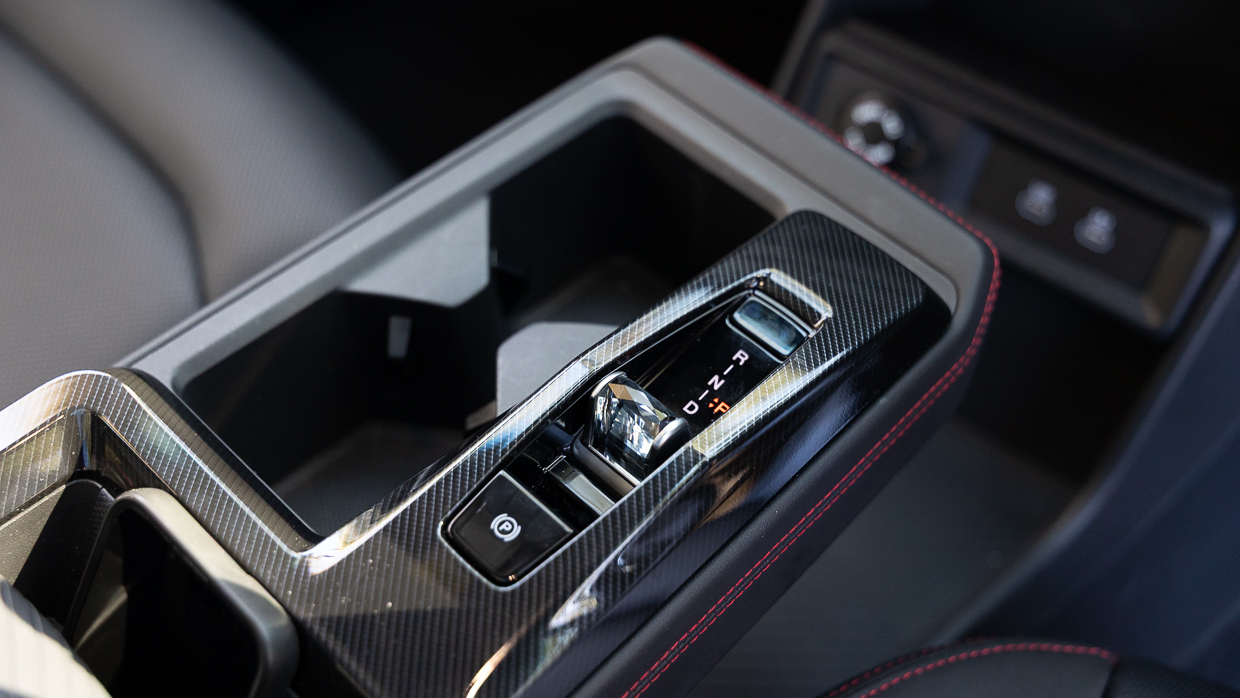
If there’s one infuriating and potentially dangerous aspect of the drive, it’s the “crystal-like” by-wire transmission controller.
One tap towards Reverse from Drive finds neutral. And vice versa. It demands two taps or being held in direction for a long moment for the transmission to switch directions.
Driven moderately, the Actyon can be somewhat pleasant, which extends through to the ride and handling.
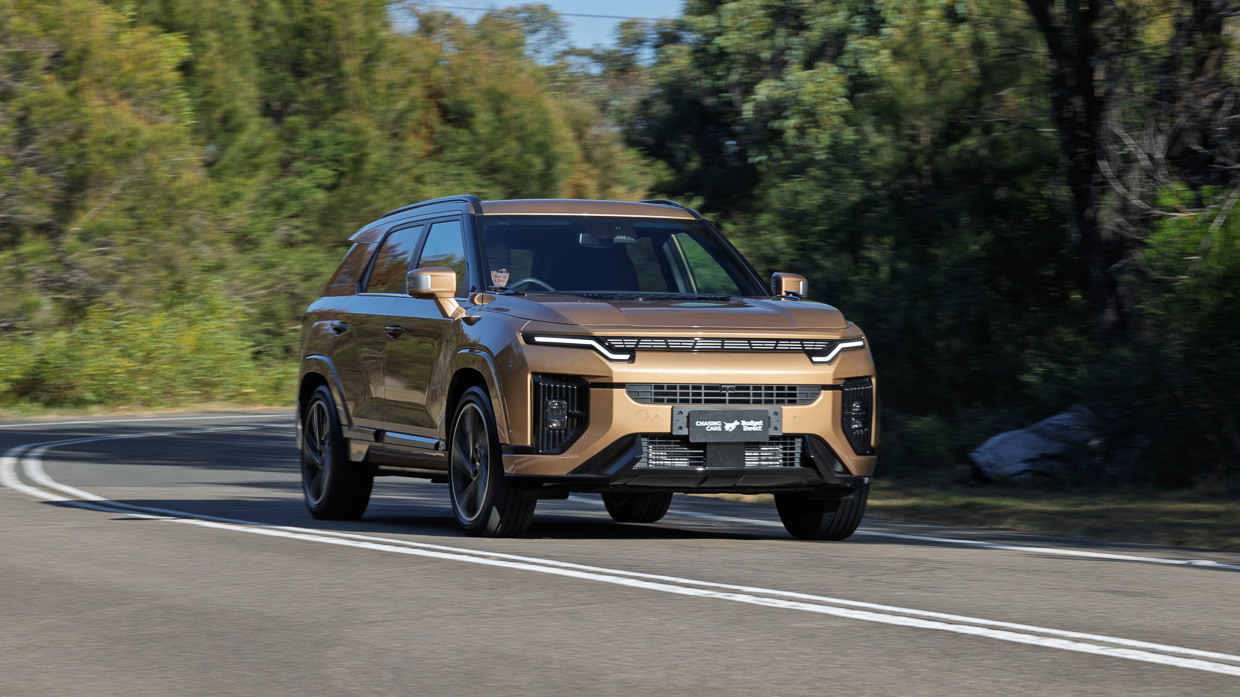
The KGM’s suspension is firmer and better controlled than some of the more flaccid and sponge-like offerings in its segment, at least on smooth roads around town.
Across big undulations and speed bumps, compression is reasonably measured and rebound is pretty disciplined. So far, so fine.
However, the big 20-inch wheels slap noticeably across small imperfections and sharp-edged road acne, and the suspension loses its composure once you push on. Hit a decent hump or dip in the middle of the corner and the body control gets properly flustered.
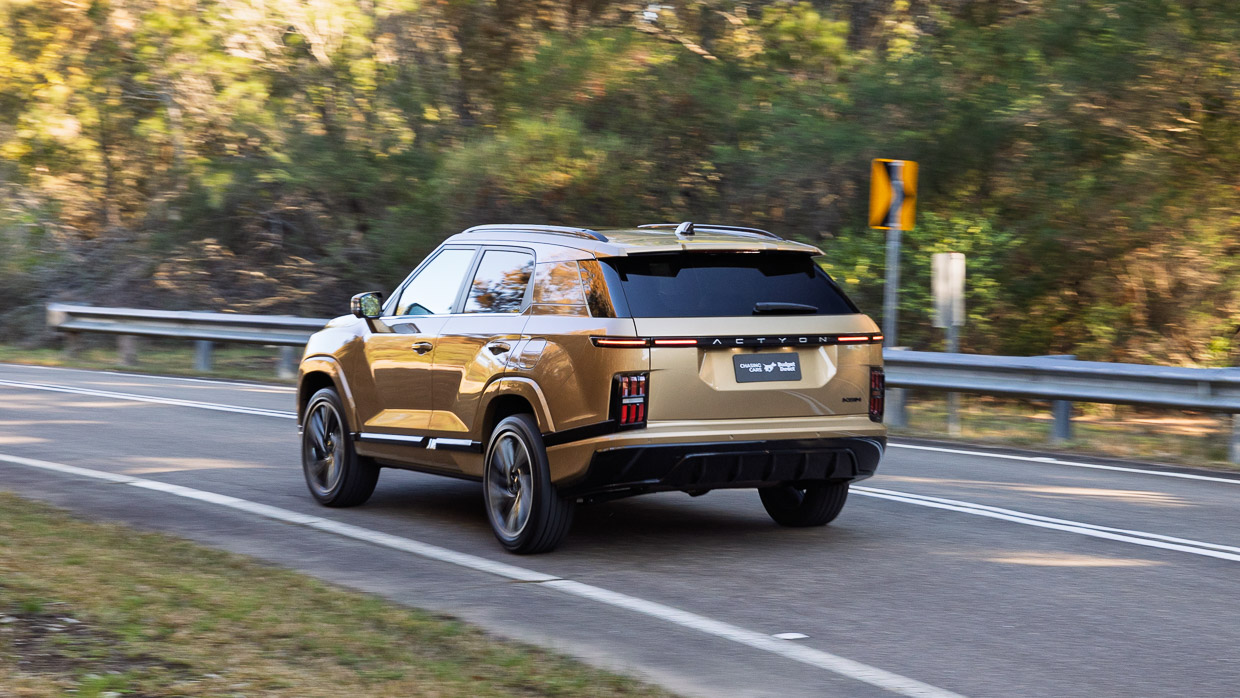
Steering, like the rest of the dynamic package, is middling. It points reasonably confidently — to a point, if you don’t push on — but is vague off centre and wooly in feel and feedback.
Perhaps the big surprise is how unobtrusive the active safety and driver assistance systems are.
There’s no annoying driver monitor system and no bleating overspeed warnings. But there are plenty of key systems featured in Actyon and the only ones that triggered warnings on test — forward proximity sensing, lane departure warning — performed naturally and accurately.
What is the Actyon K60’s interior and tech like?
From the exterior styling to the UI experience of the touchscreen media, it’s clear that KGM (and the old Ssangyong regime) has been taking notes from Hyundai Motor Company (and its Kia subsidiary). And Europe. And Japan. And… you get it.
Floating dual 12.3-inch digital displays in a bent frame with BMW-like angular driver instrument skins? Check. Multicolour ambient mood lighting? Check. Oh-so-2025 hexagonal-shaped paddle-shift steering wheel? Check.
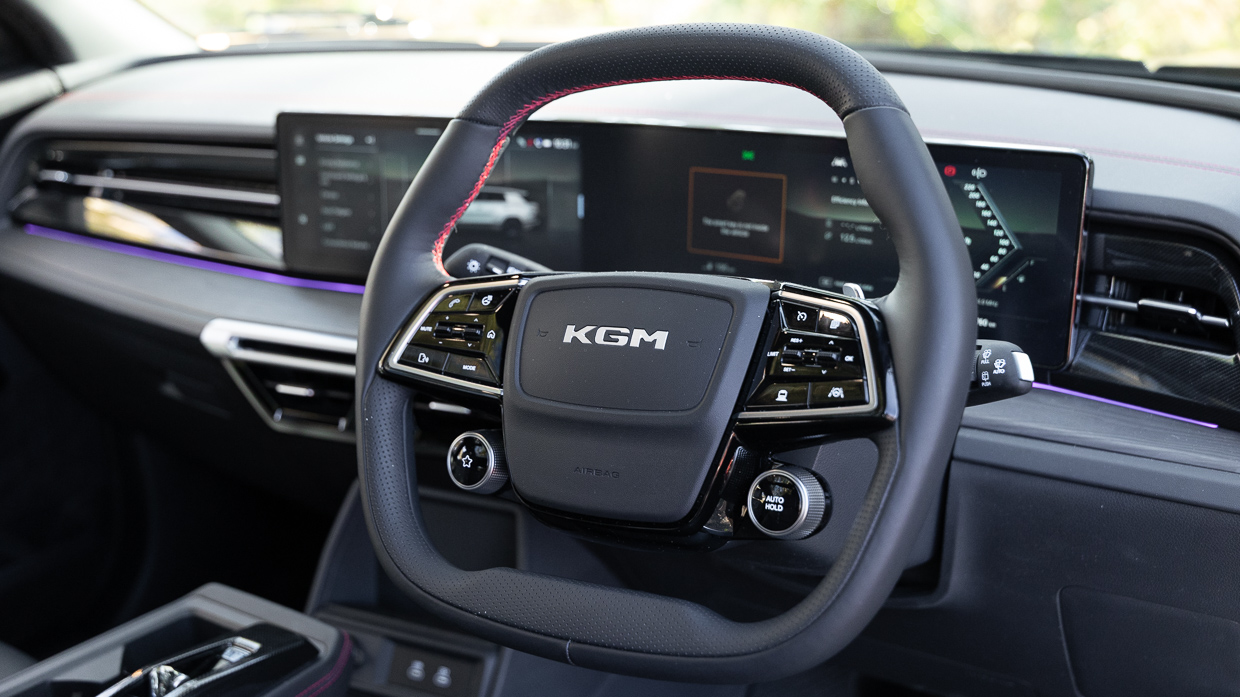
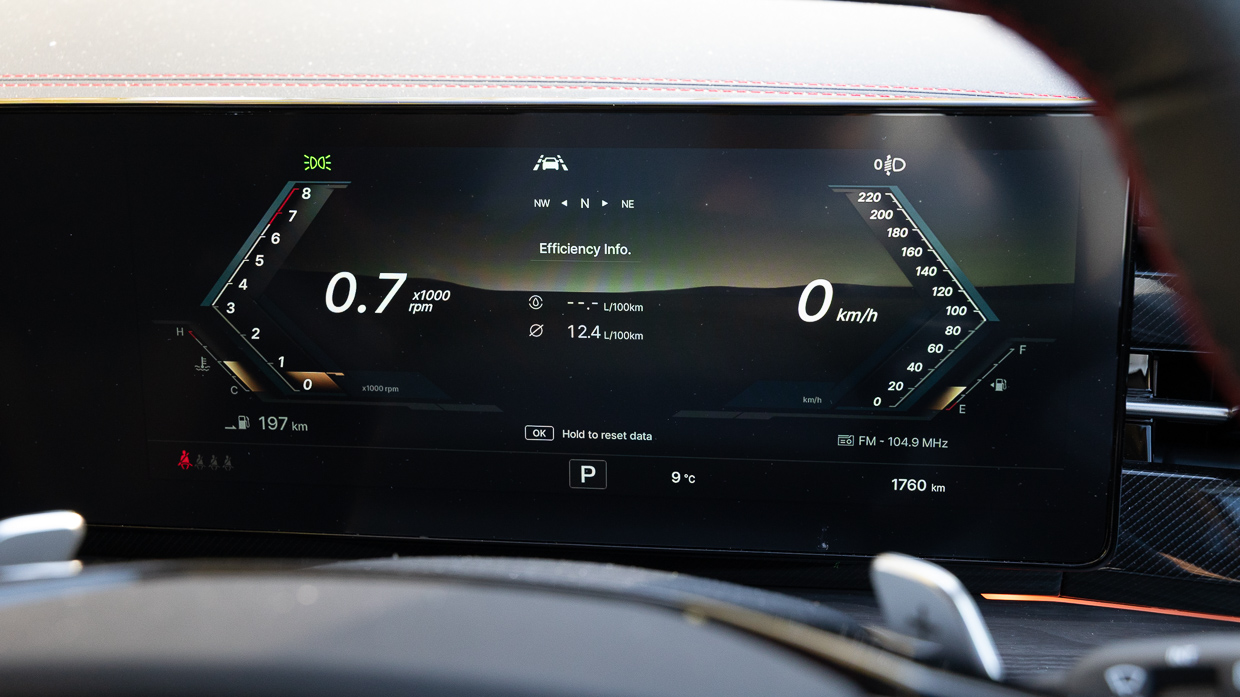
It also flaunts a brooding, Euro-like theme with more material texture than you can poke five sticks at, including the questionable combination of faux carbon-fibre and fake woodgrain.
And it’s about as far from the current crop of eye-burningly bright Chinese SUVs as you can possibly get.
The design language is quite fetching, especially the neat wraparound horizon line that brings separation between the dash fascia and the rest of the interior trim. There’s some effort injecting the Actyon with a sense of occasion and richness, and it’s particularly evident in seats.
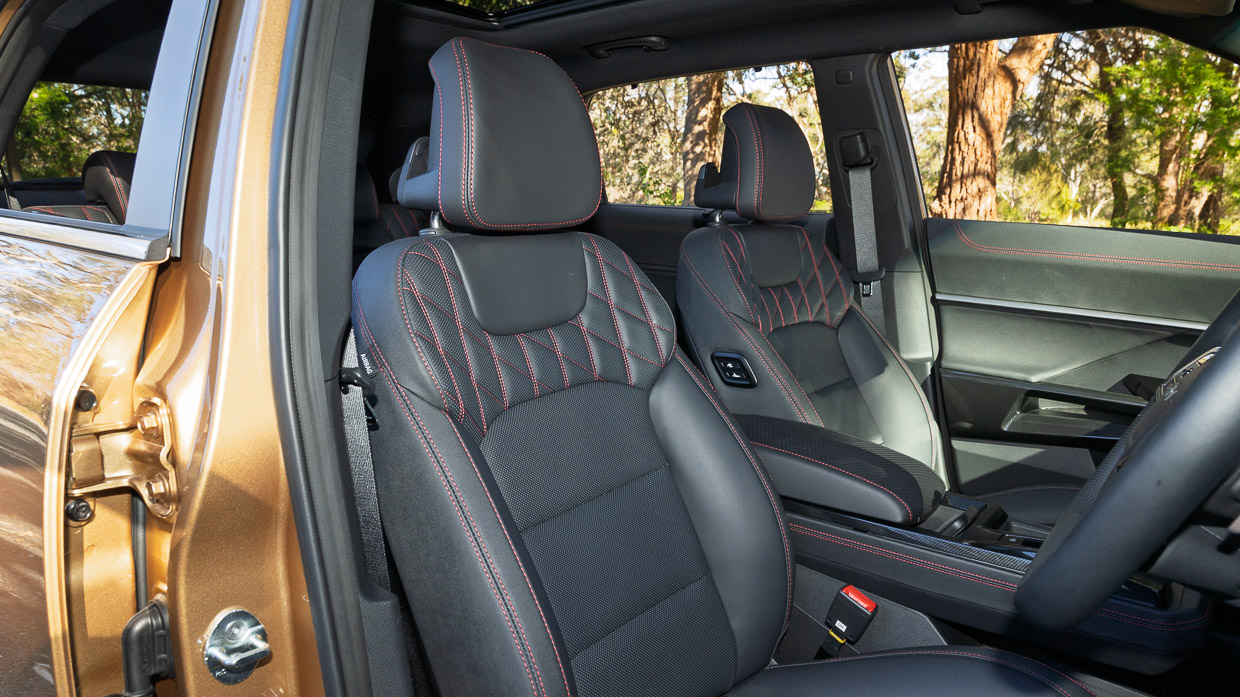
In a segment full of faux leather choices, the KGM is the real deal — apparently high-grade Nappa leather, though it’s not quite as supple as you’ll find in many Euros.
The door trims, too, are “suede”, if possibly replica stuff given that even the likes of Porsche uses synthetic suede-cloth or Alcantara these days…
The seats are…fine. The bases are short, the lateral support is middling, but you can settle in during long drives without much discomfort at all. Fit and finish, too, is very good. There are no rough edges and no squeak or rattles anywhere.
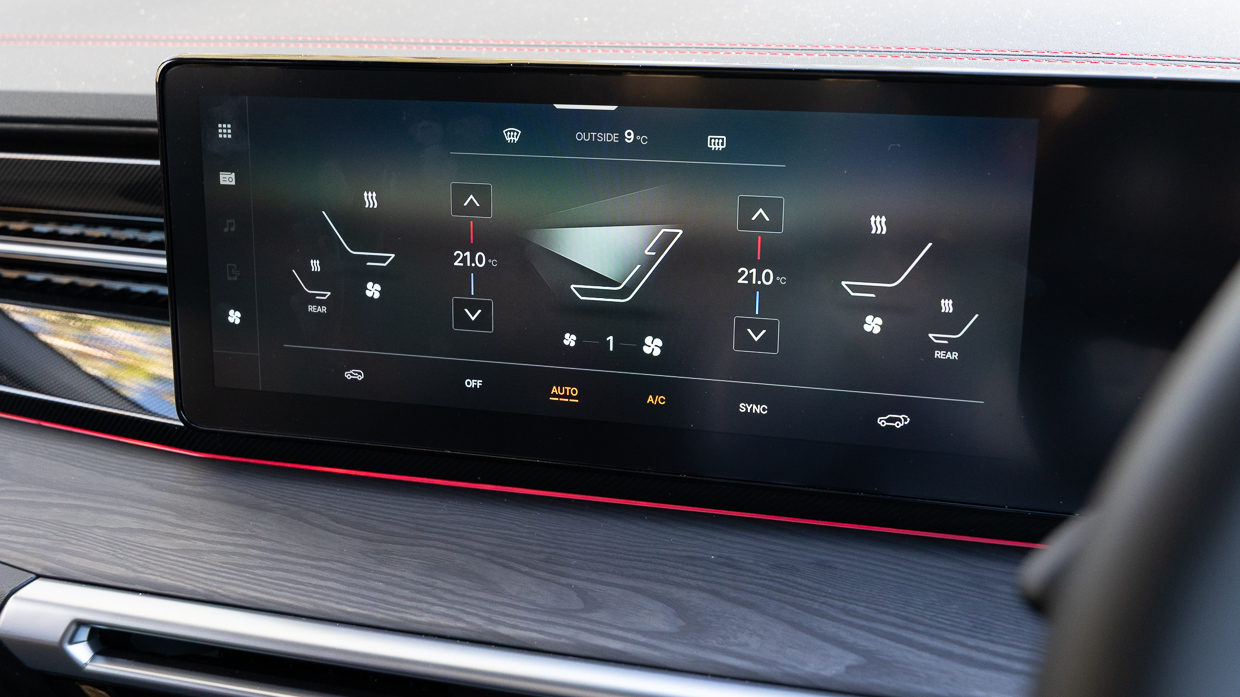
It’s not all gushing plaudits. The driver’s instruments are nice and clear but the content is not configurable.
And while the media system mirrors such simplicity, it’s desperately lacking in processing power and, as a result, its response to inputs is painfully slow at times.
Content, too, leaves a bit to be desired. The 360-degree camera system in the flagship variant is excellent, but there’s no wireless Apple CarPlay or Android Auto. You’ll need a cable for either…which is essential given that there’s no proprietary sat-nav system.
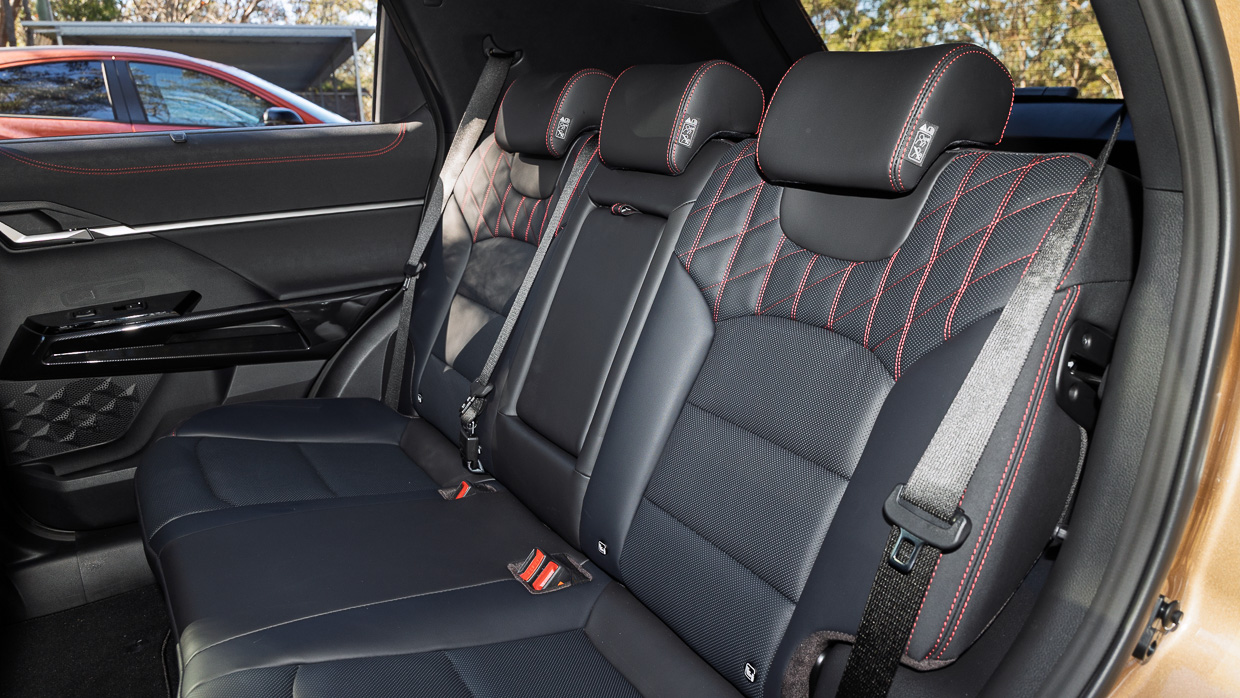
Of course, KGM’s first line of defence is that your phone supplies the navigation…which holds true until you’re out of mobile reception range, which happens quite a bit with some carriers in this wide, sunburnt land.
But most annoying is that so much of the car’s features adjustment is buried in the media system. Swapping from climate control to changing drive modes to altering audio streaming settings, for example, is a laborious and distracting chore.
Row two offers decent, class-middling roominess and the flagship’s large glass roof certainly adds a sense of airiness and space. Dual air vents, a pair of USB-C outlets (to mirror the two up front) cover off essentials, while the manual rear window blinds are a nice inclusion.
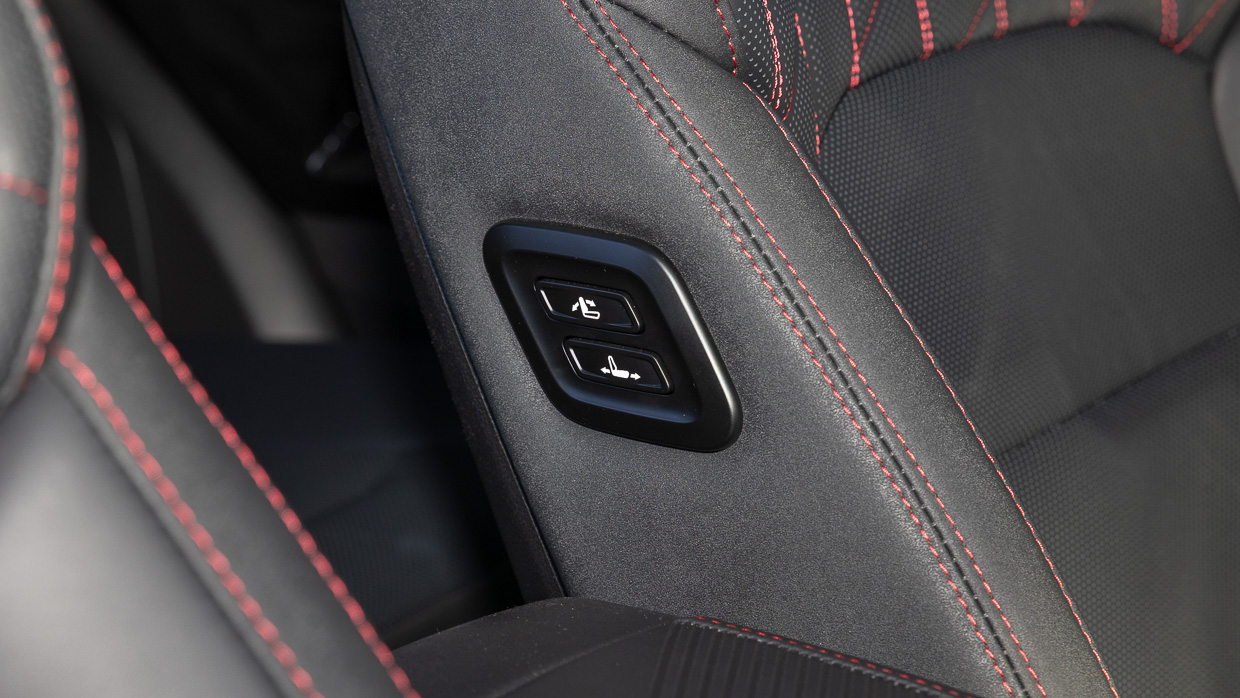
The Actyon also fits the very Hyundai-like front seat adjuster switches in the inboard edges of the seatbacks.
These are great if you need to move the front pews from the rear — installing baby capsules, etcetera — without diving back and forth between doorways. But they’re also a key target for rear occupant tomfoolery.
Then there are the head rest cradles in the back of the front seats. They first appear like device holders, but practicably they seem to exist as hangers to sling your coat over.
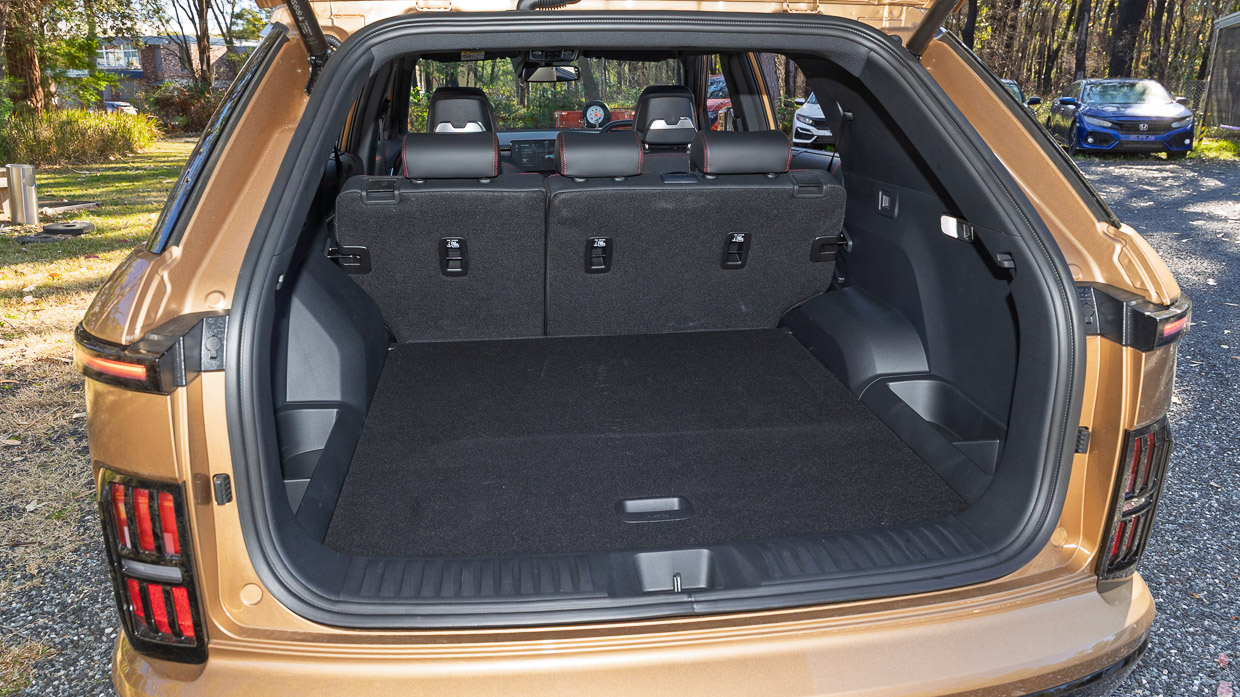
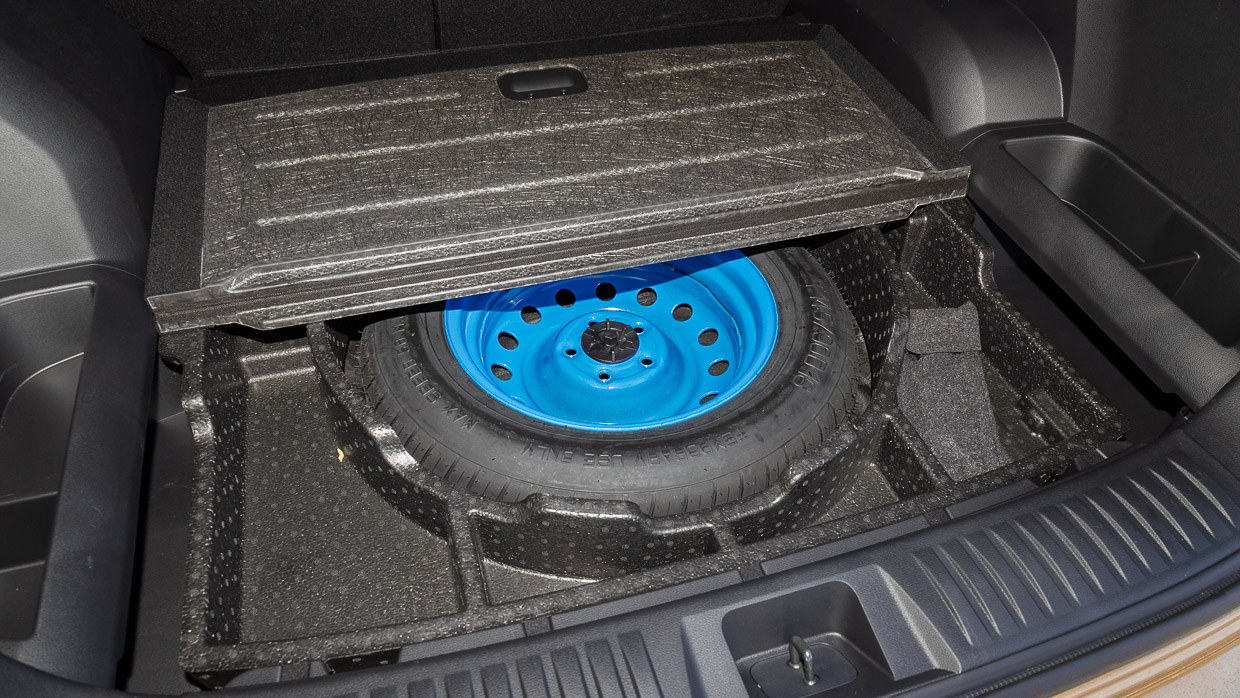
The kick sensor electric tailgate — again, a neat inclusion at this price point — works a treat, liberating 668 litres of boot space, which is academically good for class if down 35 litres on the slightly smaller Torres stablemate.
Row two stowed, there’s an advertised 1568 litres available. A space saver spare is housed under the boot floor.
Is the Actyon K60 a safe car?
The Actyon fits a number of safety systems that include:
- Autonomous emergency braking (AEB)
- Forward collision warning
- Lane change collision warning
- Lane keep assist
- Blind spot monitoring
- Rear cross traffic alert
- High beam assist
- Safe distant alert
- Eight airbags
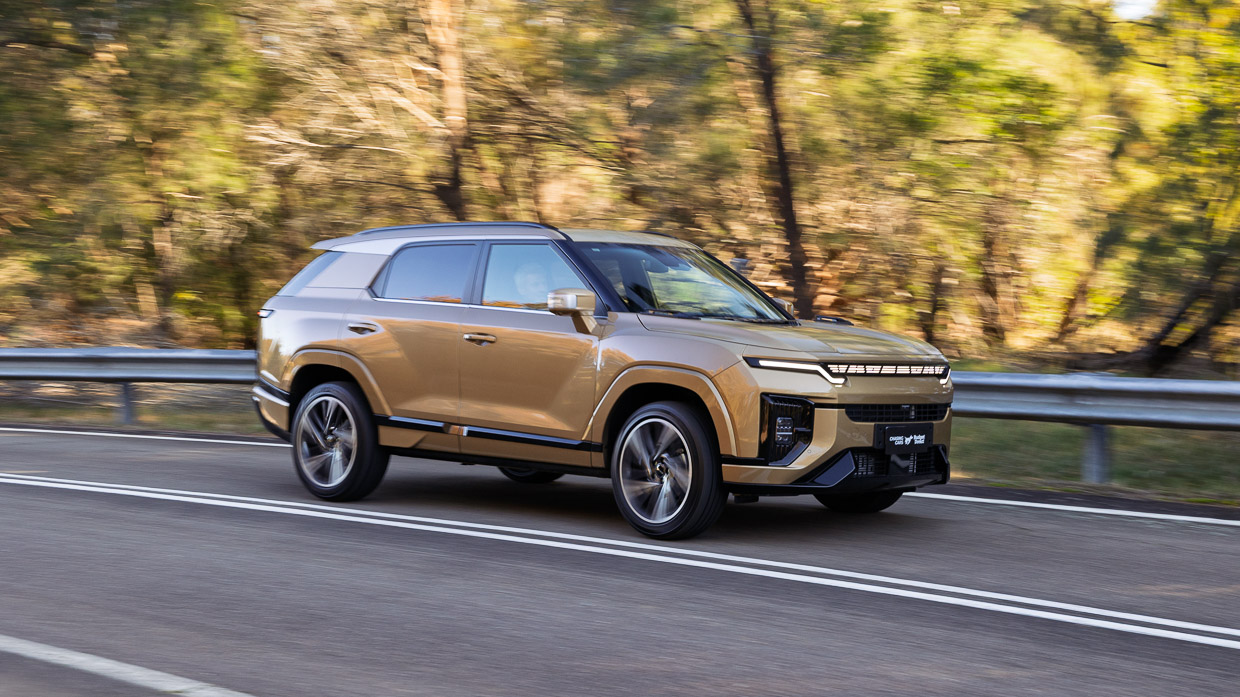
There is currently no ANCAP (or Euro NCAP) rating for this generation Actyon.
During testing, the Actyon safety systems, where activated, performed as expected and without excessive annoyance or indication of poor calibration.
What are the Actyon K60’s ownership costs?
Servicing the Actyon for five years costs a nominal $1898, with typical 12 month and 15,000km intervals.
This is around $500 pricier than that of the (hybrid) Toyota RAV4. However, this does not include other essential and periodic costs incurred in the first five years of ownership, such as spark plugs and brake fluid.
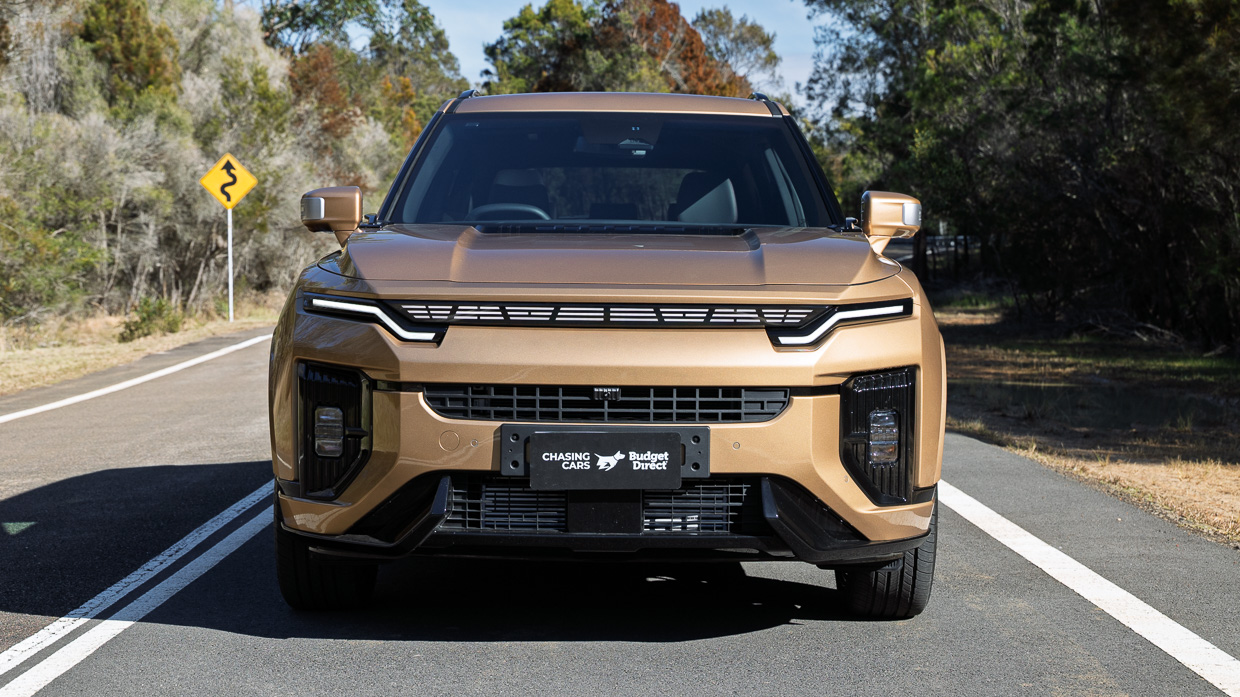
As mentioned, the Actyon is thirsty, only matching its combined 7.6L/100km claim during light-duty highway driving, while around town it regularly consumes in the double-figures. Fortuitously, it will run on cheap-ish E10 fuel.
The honest verdict on the Actyon K60
The new-generation Actyon is a big step forward in many right directions over its forebear if with some caveats beyond that it improves from such a lowly baseline.
For a new model revamped from a re-rebranded marque, its platform and powertrain DNA are hardly daisy fresh and both are shared with more affordable KGM models. As the flagship of the brand’s three midsize SUVs, it also lacks the all-wheel drive options found in the thriftier Torres.
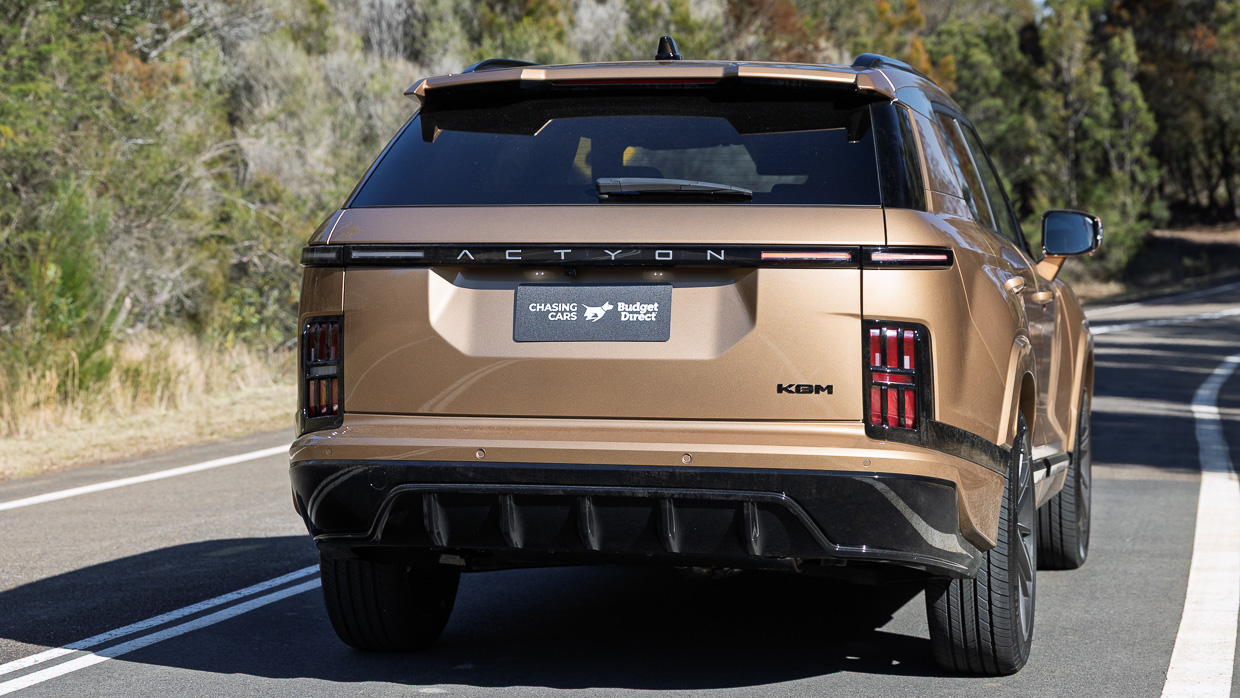
Despite the marketing spin, it’s not really a coupe SUV. And nor are you spending up into a sportier experience against its humbler stablemates, at least beyond a veneer of styling.
Its $50K driveaway pitch plays directly against proven and popular choices in RAV4, CX-5, Tucson, et al.
And while no price parity rival will be a range-topper, the Actyon K60’s spec omissions – no wireless phone mirroring, no sat-nav – suggest its flagship positioning isn’t as feature-laden as you might expect it should be.
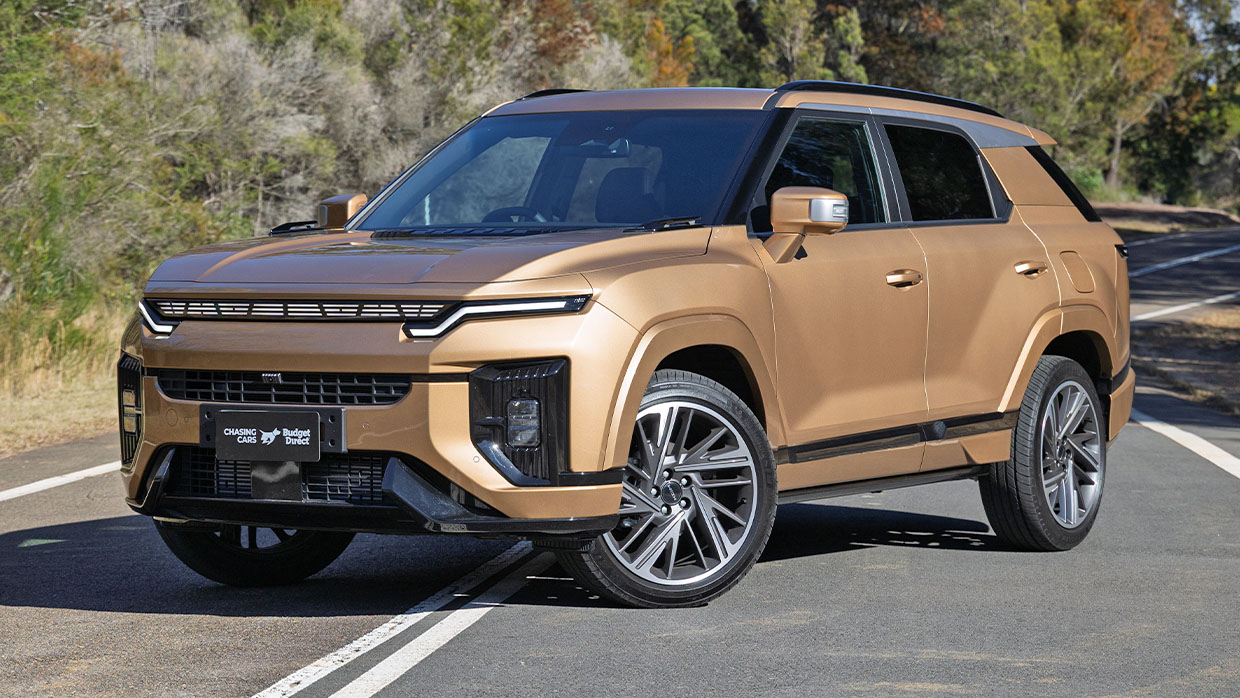
Powertrain lets the KG down. It’s not quick, it’s thirsty, refinement is hardly exceptional and the transmission controller is fraught with issues. Plus, there’s no hybrid option.
While the Actyon is likeable and an improvement for the breed, it needs to line a few ducks up before it can be a model truly recommended, especially as it plays in such a hard-fought SUV segment.
Cupra Terramar S 2025 review
2 months ago

Volkswagen sent its Tiguan platform on a cultural exchange to Barcelona; the resulting Cupra Terramar is fluent, fun…and different in the right way
Good points
- High level of standard kit
- Adequate turbo power
- Enjoyable ride and handling
- Fuel efficient in the real world
- Comfy, cool-looking cabin
- Roomy back seat and boot
Needs work
- Entry version isn’t cheap
- AWD is even dearer
- No online connectivity or app
- No seven-seat option
- Sensitive speed, attention monitors
Sixty percent of Australians have heard of Cupra, and the Barcelona-based manufacturer aims to hit a 100 percent recognition rate among surveyed Australia new car buyers in short order.
While word of mouth, and a heavy serve of offbeat marketing, has driven the Volkswagen Group-owned brand to modest early success in Australia, extending appeal further will mean launching more relevant products.
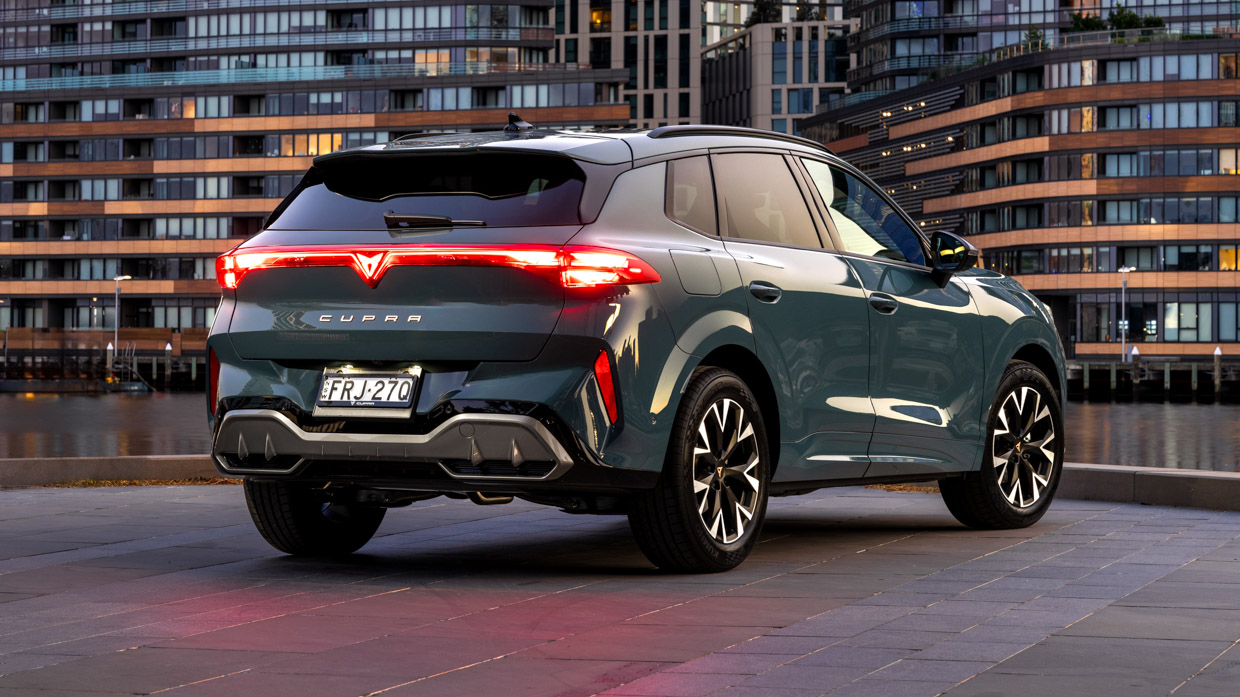
Enter the Cupra Terramar: a Goldilocks-sized 4.5-metre midsize SUV that is very similar in architecture to the recently redesigned Volkswagen Tiguan.
We liked the new Tiguan, and after an extensive first drive in the Terramar (in base 110kW mild hybrid ‘S’ format, and in top-end 195kW AWD ‘VZ trim), it turns out that we like this recipe even more with a bit of Spanish flair.
Available immediately with petrol power, and by the end of 2025 with a powerful plug-in hybrid (PHEV) offering 100km of electric range plus a turbo engine, the Terramar’s dimensions closely resemble the Tiguan.
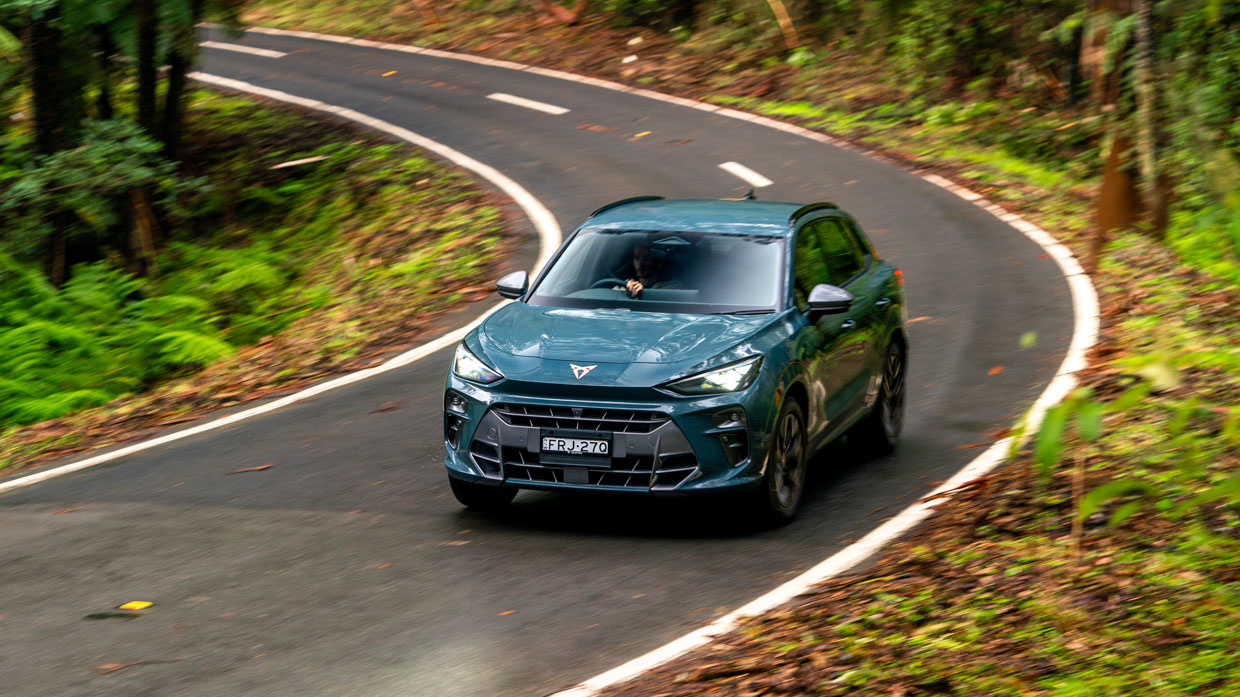
About 80 percent of the driving experience does, too – but it is the 20 percent ‘extra’ that Cupra is responsible for that adds desirable charm atop the Tiguan’s strait-laced excellence.
A more interesting interior, appealing steering feel, and the availability of modern and economical engines than the volume-selling Volkswagen should all make the Cupra appealing to those willing to take a chance on a lesser-known brand.
What are the Terramar’s features and options for the price?
The Terramar is far from the cheapest midsize SUV. Its positioning in the hotly-contested segment echoes the brand’s aspiration to sit somewhere between mainstream and premium vehicles – even a little north of where Volkswagen plays.
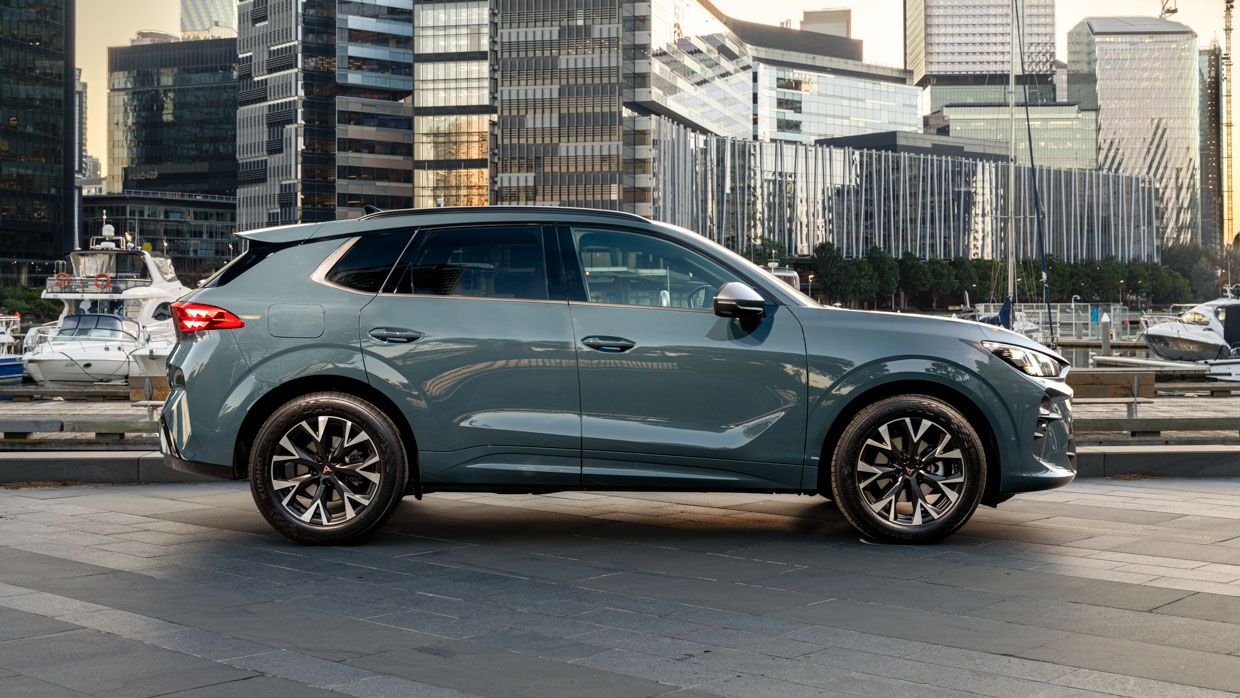
National driveaway prices keep things consistent across Australia. Pricing for the forthcoming Terramar VZe PHEV is not yet known, but we do know what this crossover costs when purchased with one of three launch engines:
- Terramar S (110kW/250Nm 1.5T mild hybrid, front-wheel drive): $58,490 driveaway
- Terramar V (150kW/320Nm 2.0T, all-wheel drive): $66,490 driveaway
- Terramar VZ (195kW/400Nm 2.0T, all-wheel drive): $73,490 driveaway
Optional equipment for the S and V trims is limited to a Leather and Sound Package ($1600) that adds ‘High Canyon’ deep burgundy leather and a Sennheiser stereo, and an opening panoramic sunroof with blind ($2000).
The sunroof is also available optionally for the VZ, which exclusively picks up the offer of an Akebono performance brake package ($4200).
We spent most of our time in the entry-level Terramar S, both with and without the Leather and Sound Package, and we’re concentrating on the S in this review.
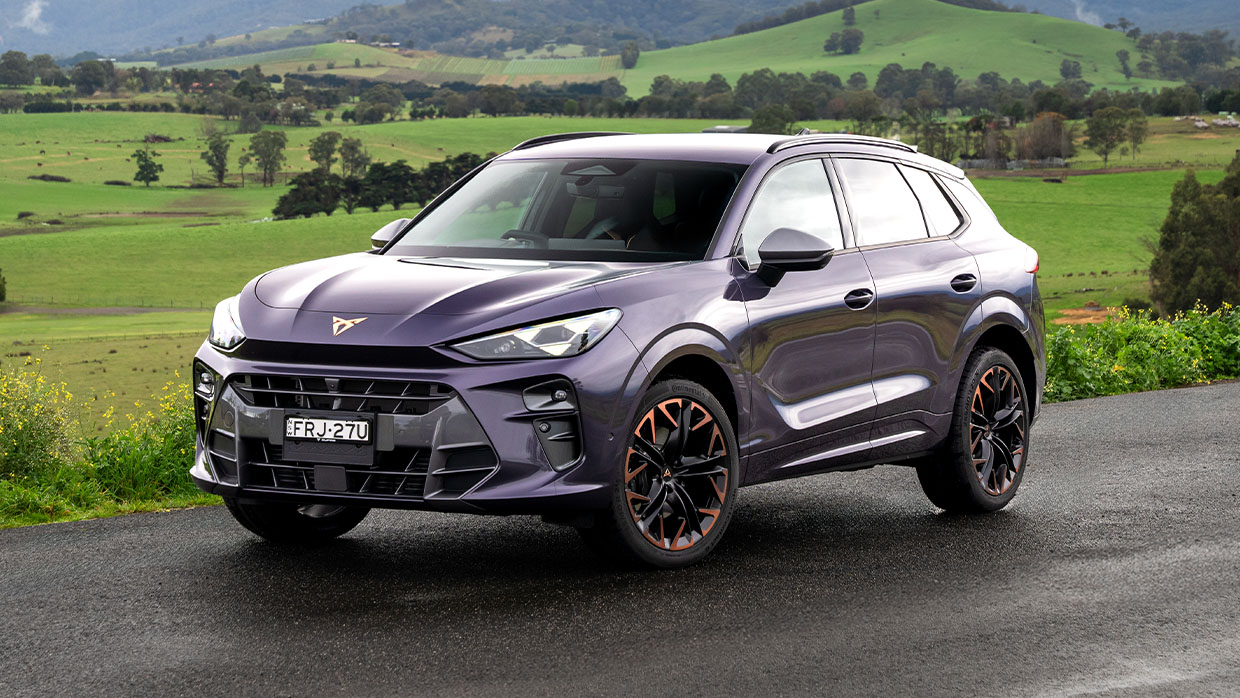
Standard equipment for the S grade includes 18-inch ‘Atomic’ silver alloy wheels, LED headlights with diamond-pattern running lights, power tailgate with kick sensor, smart entry and push-button start, heated leather steering wheel, nine-speaker stereo, three-zone climate control,, and a wireless charger.
Infotainment is by way of a 12.9-inch touchscreen (with wireless Apple CarPlay/Android Auto) and a 10.25-inch digital instrument cluster.
A nine-speaker stereo is standard, as are heated/power-adjustable front seats with driver’s memory. By default, the upholstery is an appealing mix of leatherette and Dinamica microfibre.
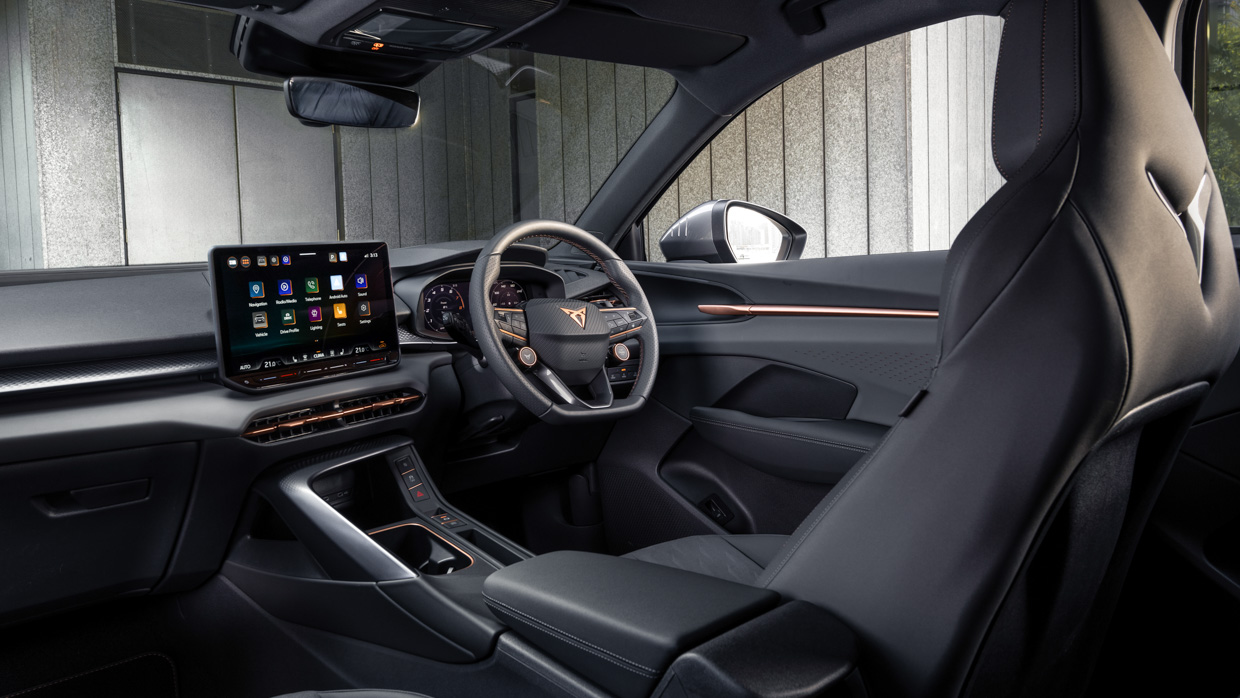
Only two paints—Dark Void (purple) and Graphene Grey—attract a $620 upcharge. Given Midnight Black, Fiord Blue, Timanfaya Grey, Glacial White and Cosmos Blue are all no-cost, it really isn’t necessary to spend up on the Terramar above absolute base.
Still, dropping another $8000 on the Terramar V spec does add all-wheel drive grip, +36 percent power, 19-inch ‘Cosmic’ black/copper alloy wheels, larger front brakes, and hill descent control.
From there, it’s a final $7000 leap into the Terramar VZ, itself +30 percent more powerful than the V. The VZ makes the Leather and Sound Package standard, while grabbing 20-inch wheels, DCC Pro adaptive dampers, Matrix LED headlights, enlarged rear brakes, and a special Cupra drive mode.
How does the Terramar drive?
The Terramar is a standout midsize SUV from a driving dynamics perspective.
While it’s about 20 percent less fun behind the wheel than the outstanding Cupra Formentor (which continues on as a slightly smaller, lower alternative SUV), the Terramar easily bests big-name rivals for ride and handling fluency.
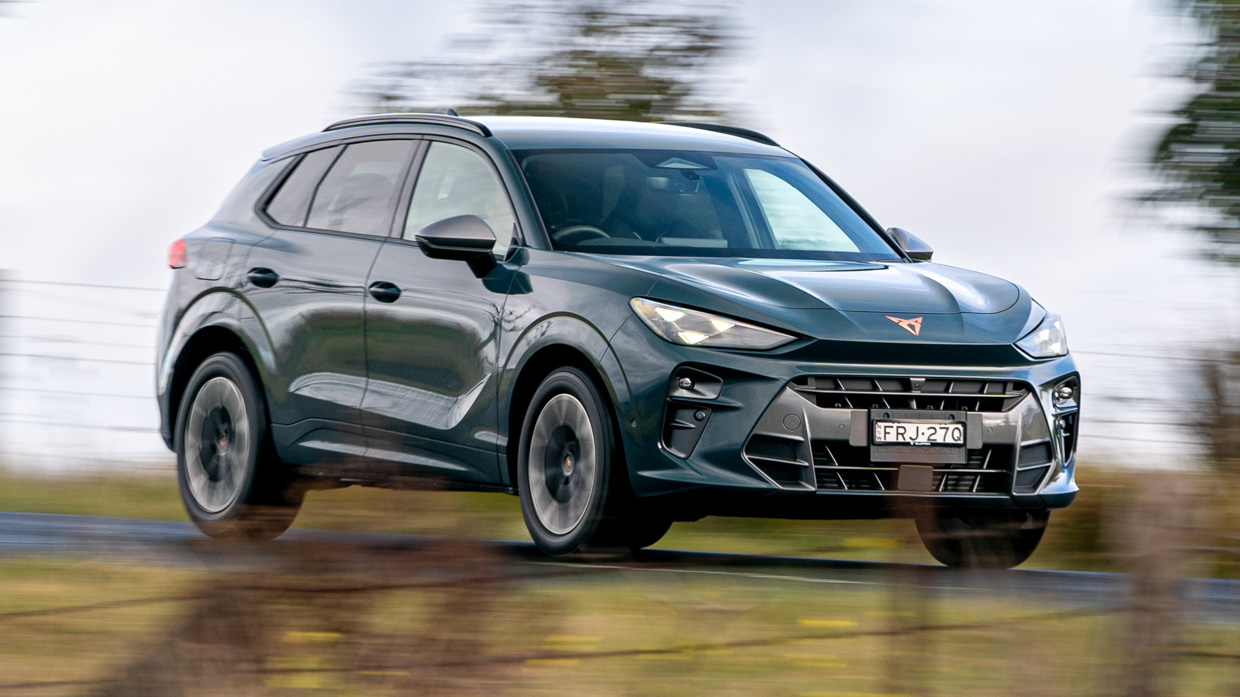
Unlike the Tiguan, the Terramar also brings the Volkswagen Group’s latest mild-hybrid engine tech to the fore, but only in base model format. The S utilises the conglomerate’s EA211 Evo 1.5-litre turbo petrol four-cylinder powertrain with 48-volt mild hybrid assist.
On-paper outputs of 110kW of power and 250Nm of torque look modest (and are modest), but they fail to show how the little turbo mill muscularly manufactures torque early in the revs.
The numbers also fail to show how effective the new mild hybrid system is at masking the driveline’s shortcomings – such as when it is off boost, or when the DQ381 wet-clutch DSG is changing gears. The Terramar S is a nice upgrade over the Tiguan’s older 1.4-litre, non-hybrid four-pot.
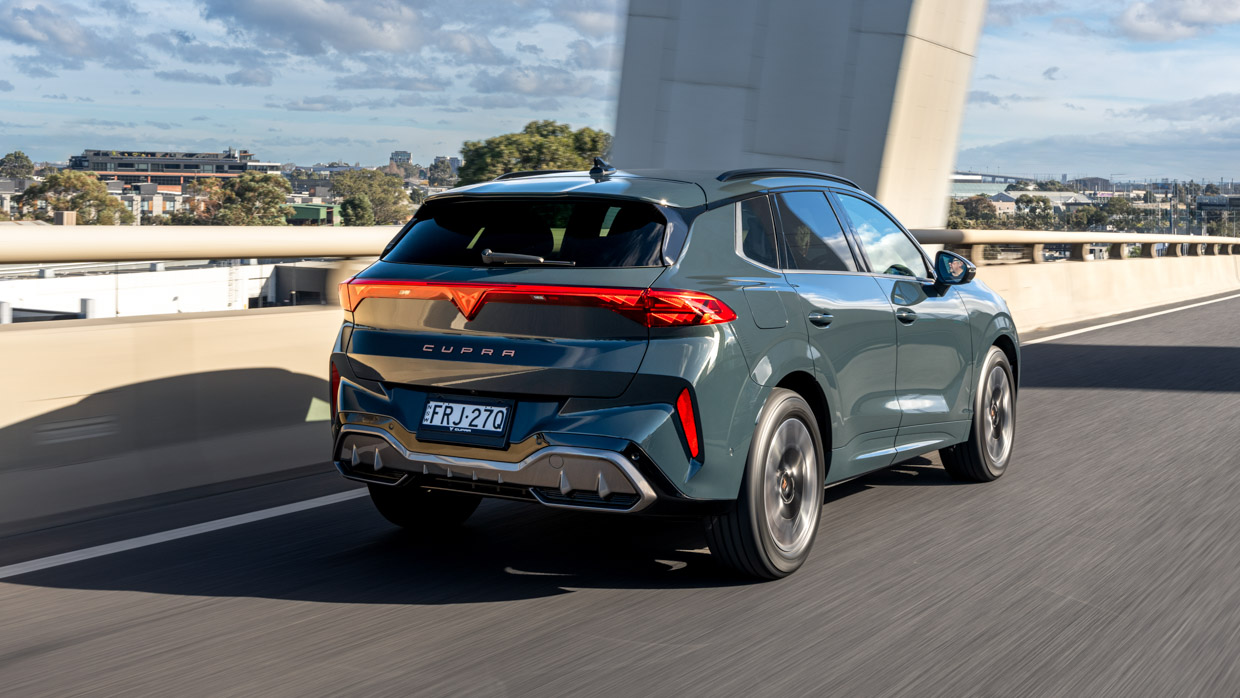
Certainly, the Terramar VZ (which has a whopping 195kW/400Nm 2.0-litre AWD tune) is much faster everywhere, though the Terramar S has quite an appealing level of performance.
The 1.5-litre is easy, approachable and urgent enough to drive in town; it merges with sufficient authority. And when you find a good backroad, this is an enjoyable SUV to punt as you’re able to use all the available performance without doing crazy speeds.
It may turn out that the 150kW Terramar V is the sweet spot, and we’re interested in the forthcoming VZe PHEV if it can be priced competitively.
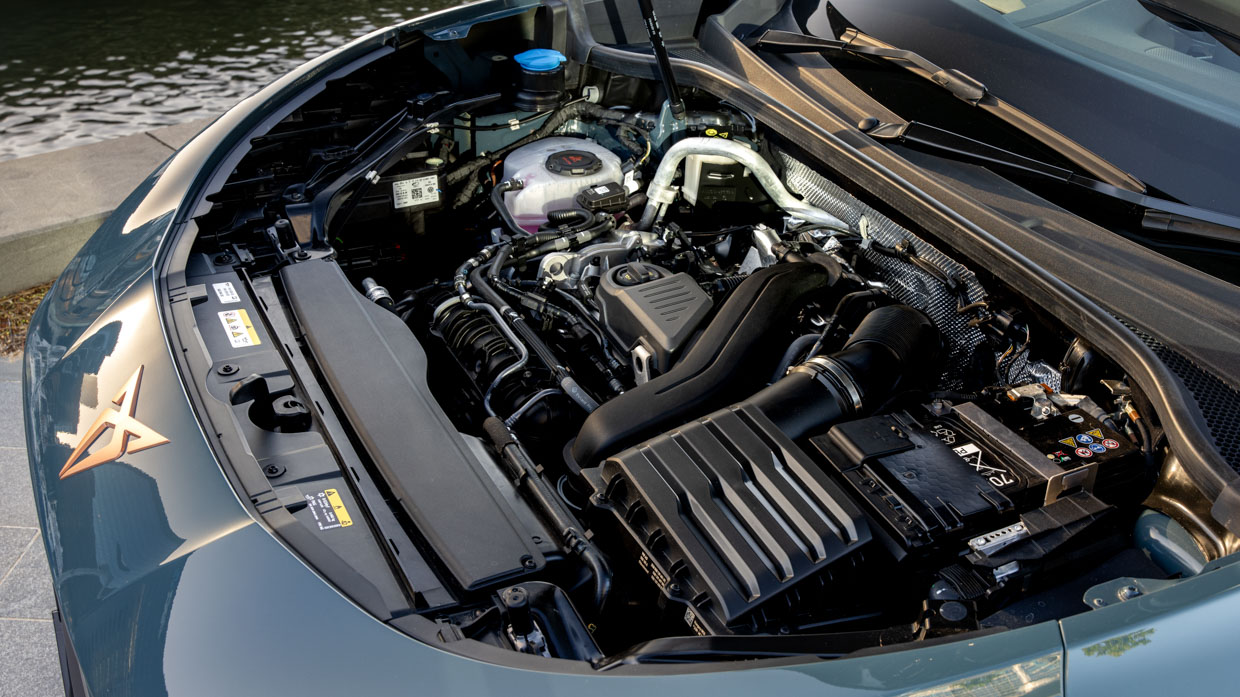
All Terramars share a lovely chassis. Built atop Volkswagen’s MQB Evo transverse platform, the midsize Cupra has bespoke chassis tuning and a lower ride height than a Tiguan; it feels poised and well-balanced.
Cupra steering clearly takes a page out of Porsche’s homework, and we’re OK with that: the Terramar echoes the Formentor’s light, feelsome tiller.
Grip levels on the base S’s Hankook tyres is good rather than great, but we like the ride quality that comes from the combination of this trim’s passive dampers and 18-inch wheels with plenty of tyre sidewall.
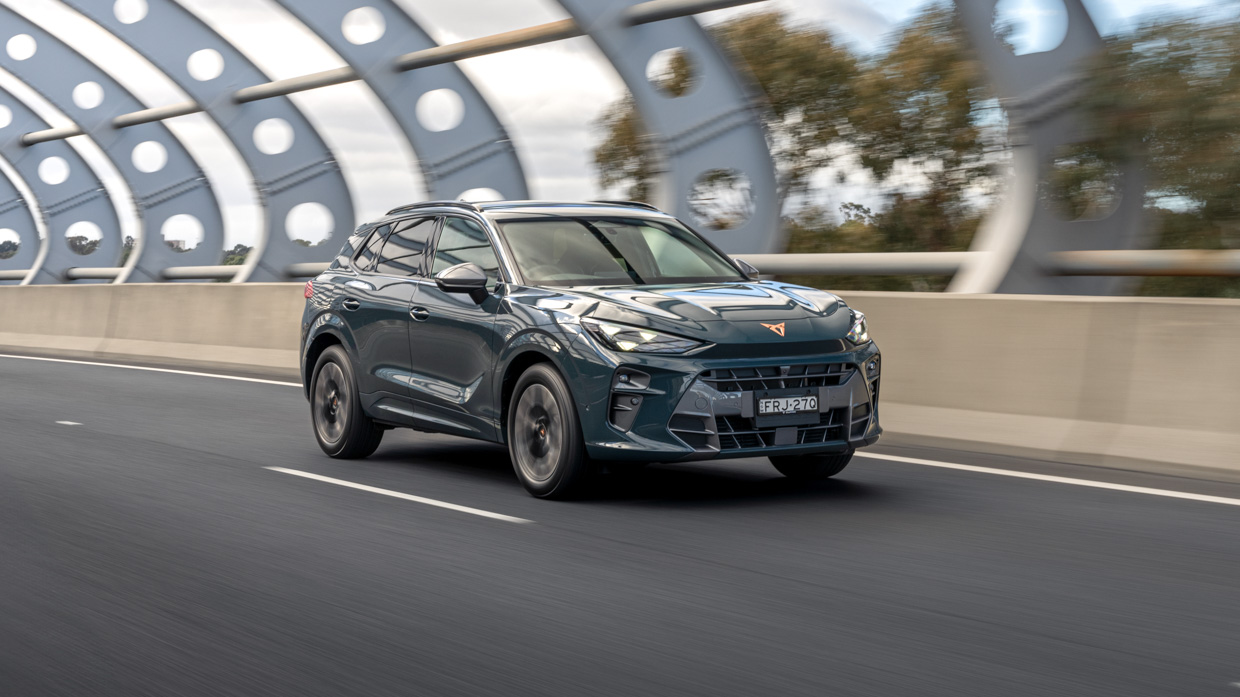
Our point of comparison was the frenetic VZ’s 20-inch/low profile tyre/adaptive suspension combination. That car’s 15-stage DCC Pro dampers are impressive, but the huge and heavy wheels can’t match the delicate fluency of the S for overall ride-handling balance.
It’s a refined thing, with limited road noise, and the tuning of the Travel Assist strong adaptive cruise control/lane centring is bang-on, with the capacitive steering wheel allowing just a light palm touch to keep the system activated on long highway stints.
What is the Terramar’s interior and tech like?
Cupra openly asserts it wants to straddle the mainstream and premium segments, and the nature of the Terramar’s interior reflects this balance.
The important stuff (seat comfort, ergonomics, tech) is all executed with excellence; while you can find materials that are ‘less than luxurious’ below the beltline, Cupra has ensured the things passengers will touch every day all feel sufficiently plush.
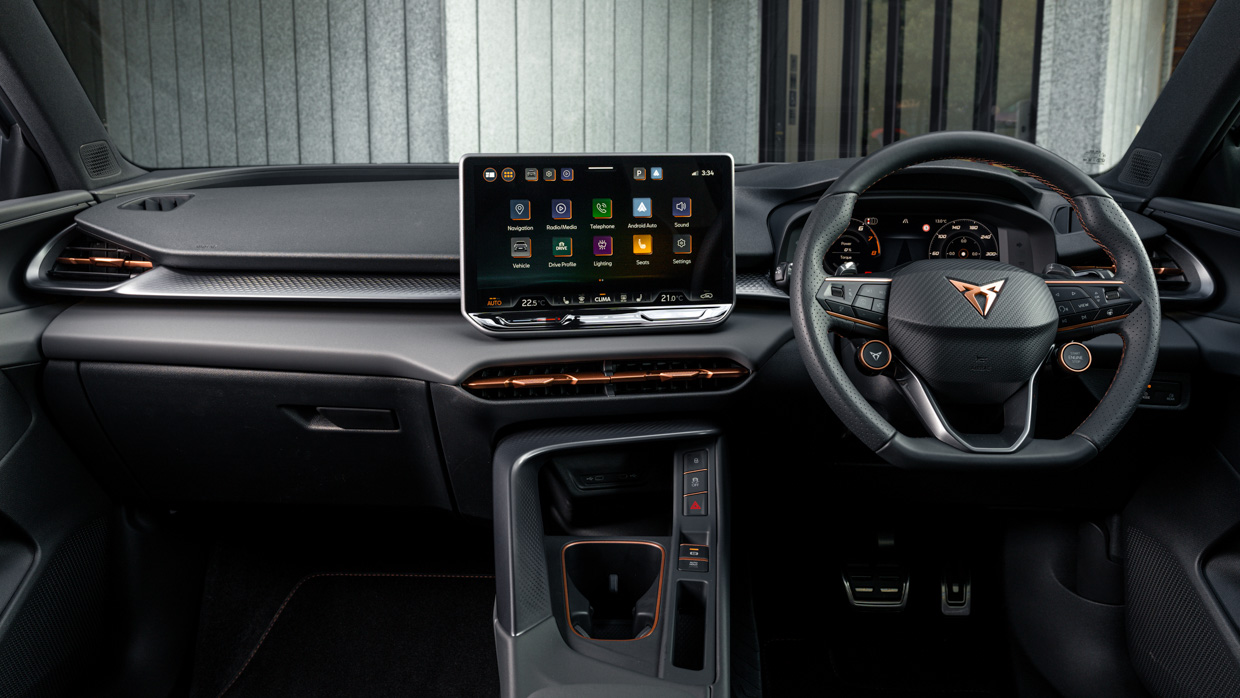
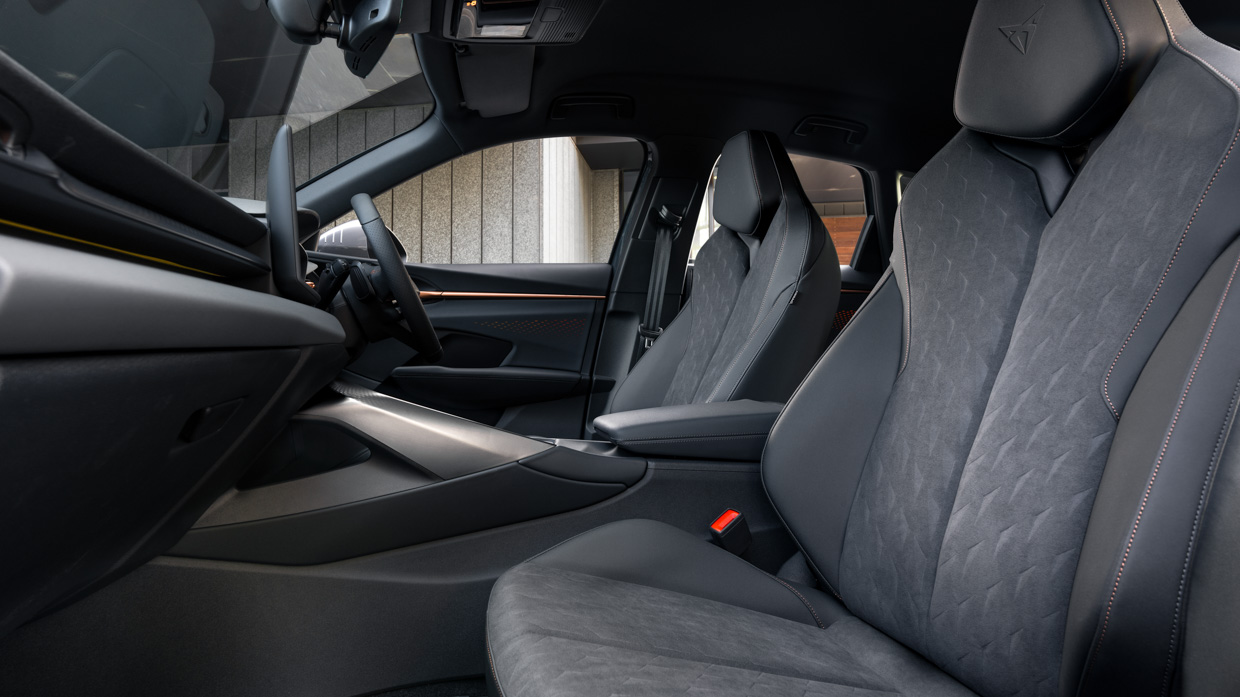
With either the standard Dinamica/artificial leather trim, or the optional real leather, the front seats are just excellent. They look cool, with an integrated bucket design, but back and leg support is superb with a subtle Germanic firmness that stays supportive on long drives.
Having conveniences like power adjustment, memory for multiple drivers, and front seat heating all standard betrays a big reason why the Terramar isn’t the cheapest option in the segment, it’s well-equipped from base.
Many vehicles (including new entrants) have long spec sheets but what the Terramar gets right is that everything works like you’d expect.
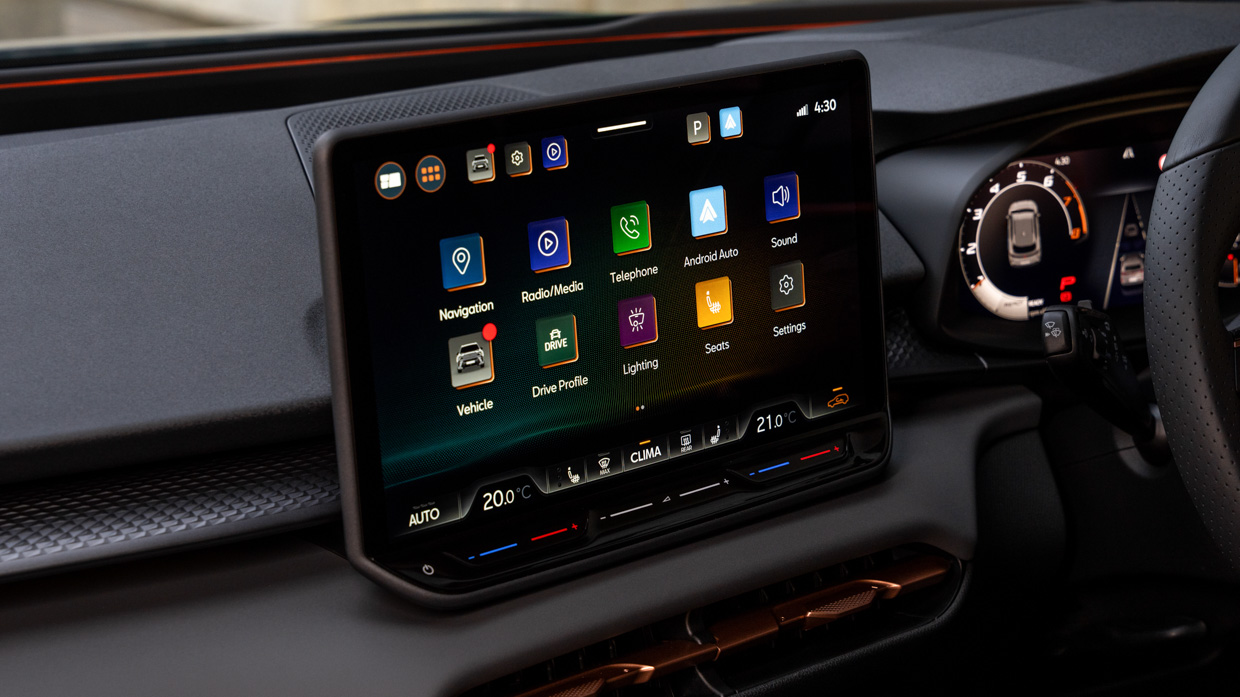
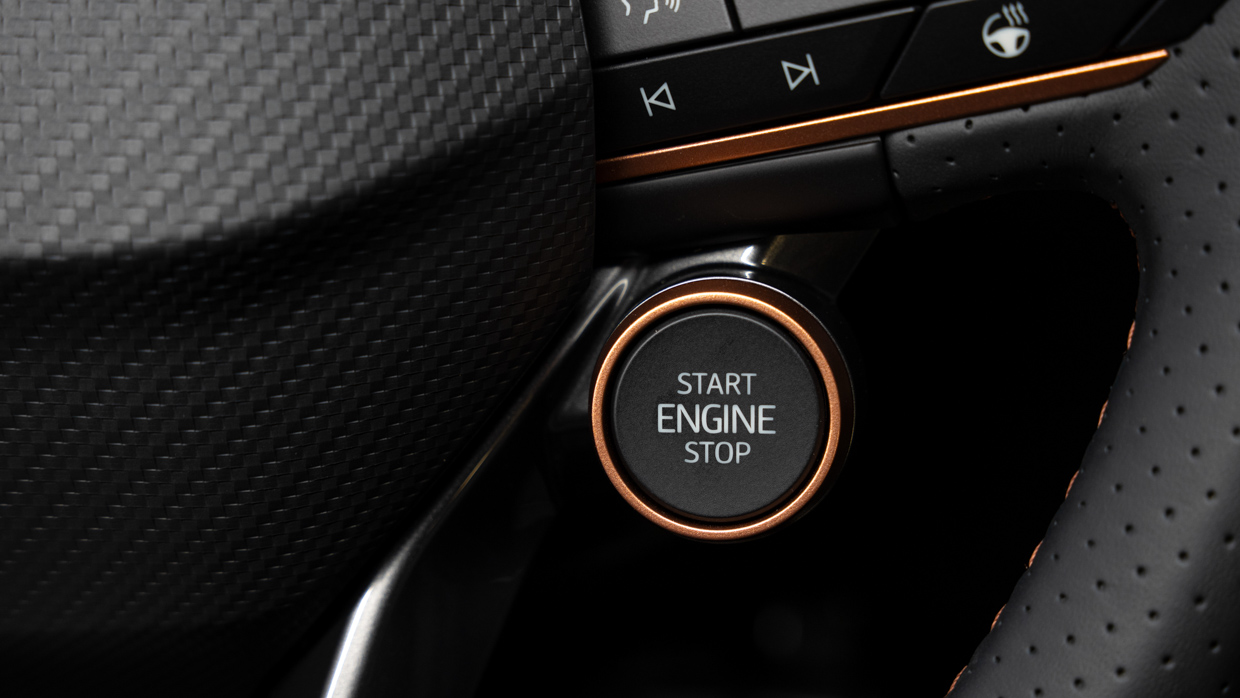
Few bugbears appear. They might include touch-capacitive climate sliders (though these are backlit in this model), but the always-on climate panel on the 12.9-inch main screen significantly reduces frustration, and the perforated thin-rimmed leather wheel has real buttons and knobs.
Terramar also provides us with further clear evidence of the Volkswagen Group’s snap-back to high perceived quality with the reappearance of things like faux-leather door grabs which sound unimportant, but you touch them every time you leave the car.
Connectivity is decent, with both displays logical to operate and wireless smartphone mirroring working without fault—and the base nine-speaker stereo is good (the 12-speaker Sennheiser a crisper improvement).
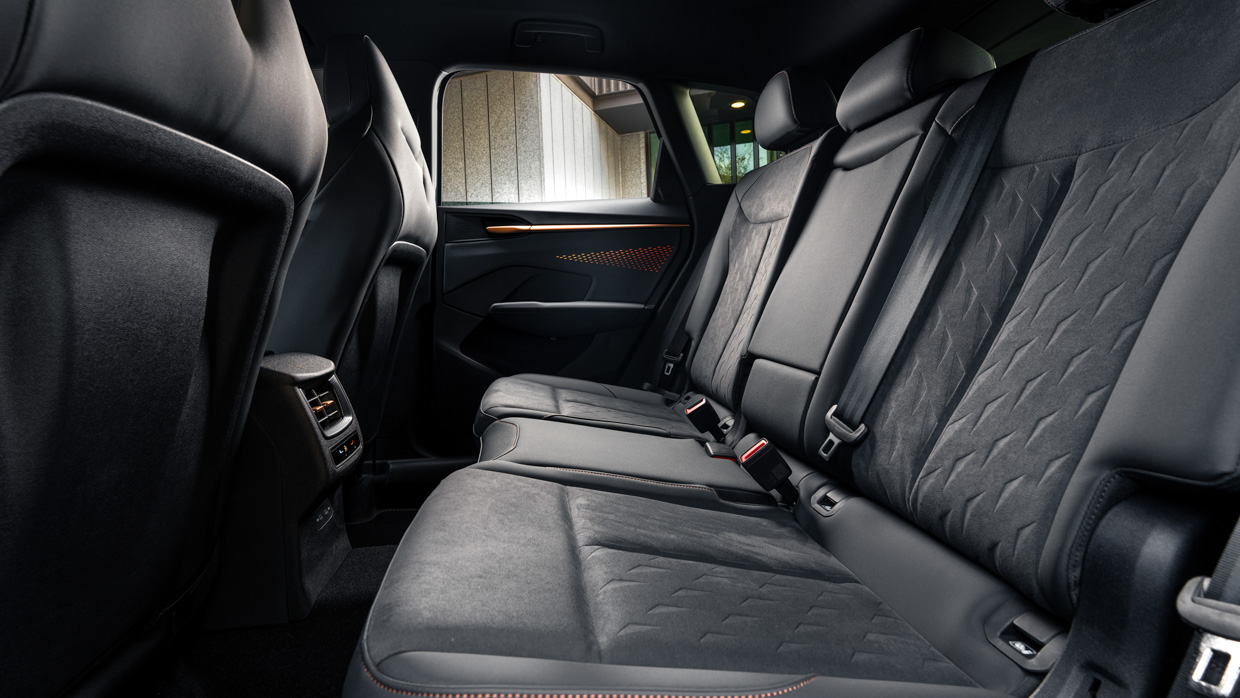
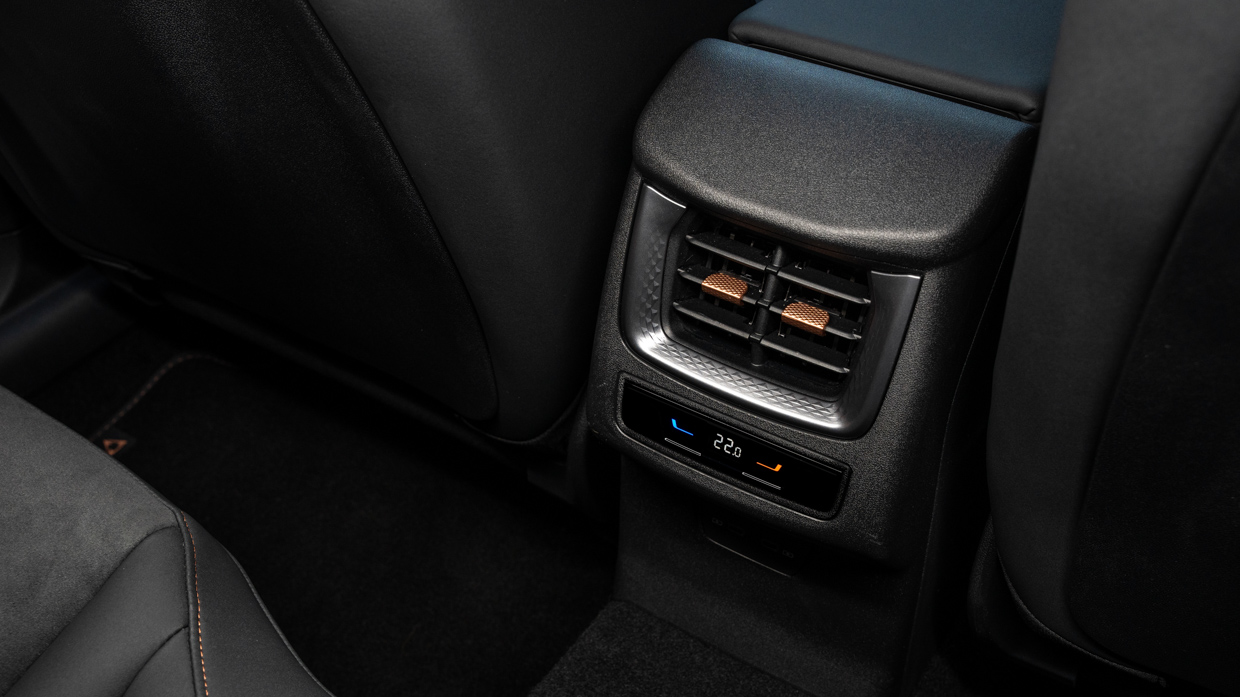
But the lack of a companion smartphone app offering things like remote locking and operation of the air conditioning puts Cupra behind many rivals.
The back seat is supportive, too, and benefits from a sliding system and air vents. However, you’d say the Terramar is only just big enough for families: six-footers do fit but this Cupra still isn’t generously proportioned.
We love the size but modern families with a couple of kids and heaps of stuff in tow will wish Cupra offered a bigger SUV…which they do, in the all-electric Tavascan, but the Terramar is as big as this brand’s combustion cars get.
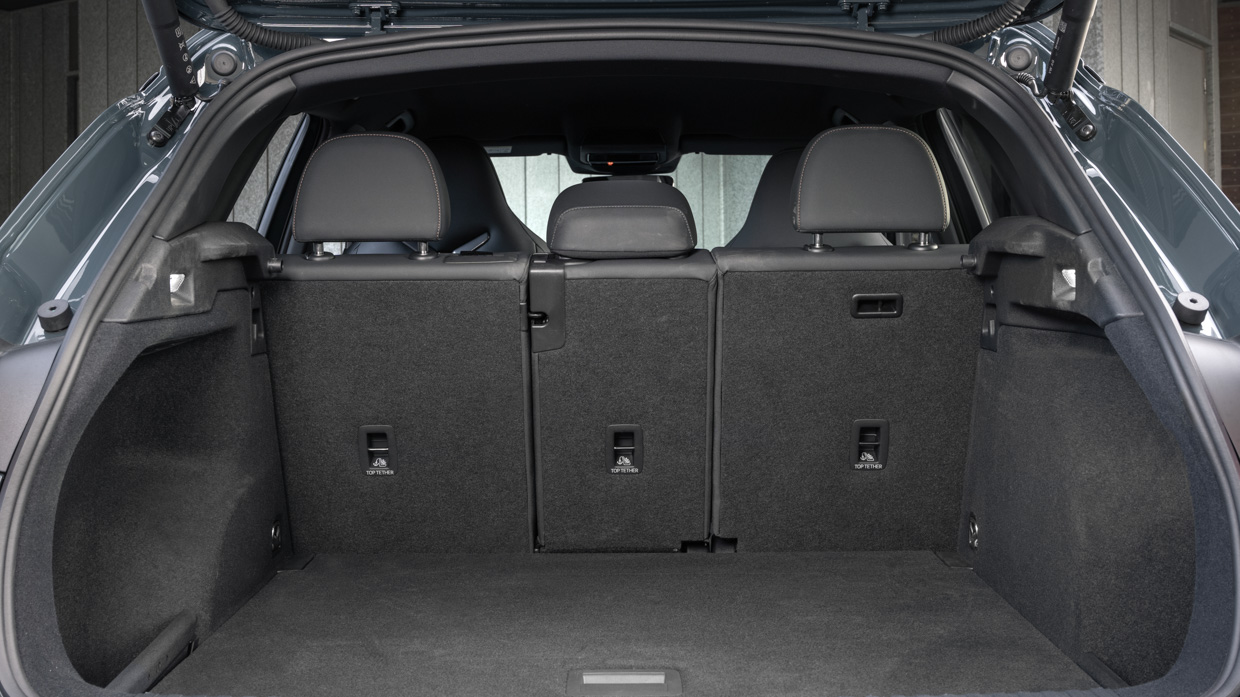
Unlike the Volkswagen Tiguan, there is currently no equivalent expanded wheelbase, seven-seat ‘Tayron’ sibling under the Cupra brand, and we think that’s a shame.
Boot space, behind a standard kick open/close power tailgate, is decent for the class at a minimum of 508 litres (with the rear seats slid back), expanding significantly if those pews are pushed forward or folded flat.
A space saver spare wheel is standard.
Is the Terramar a safe car?
The Terramar carries a five-star ANCAP safety rating with a 2025 date stamp. ANCAP’s protocols became harder in 2025, so this Cupra has a few extra safety systems, including driver monitoring which can be a touch oversensitive at times.
Safety scores published by ANCAP for the Terramar are as follows:
- 89 percent for adult occupant protection
- 87 percent for child occupant protection
- 82 percent for vulnerable road user (pedestrian and cyclist detection)
- 78 percent for safety assist
The five-star score was crucial given Cupra intends to sell more cars to fleets in future, while families can also sit tight knowing this is a safe car.
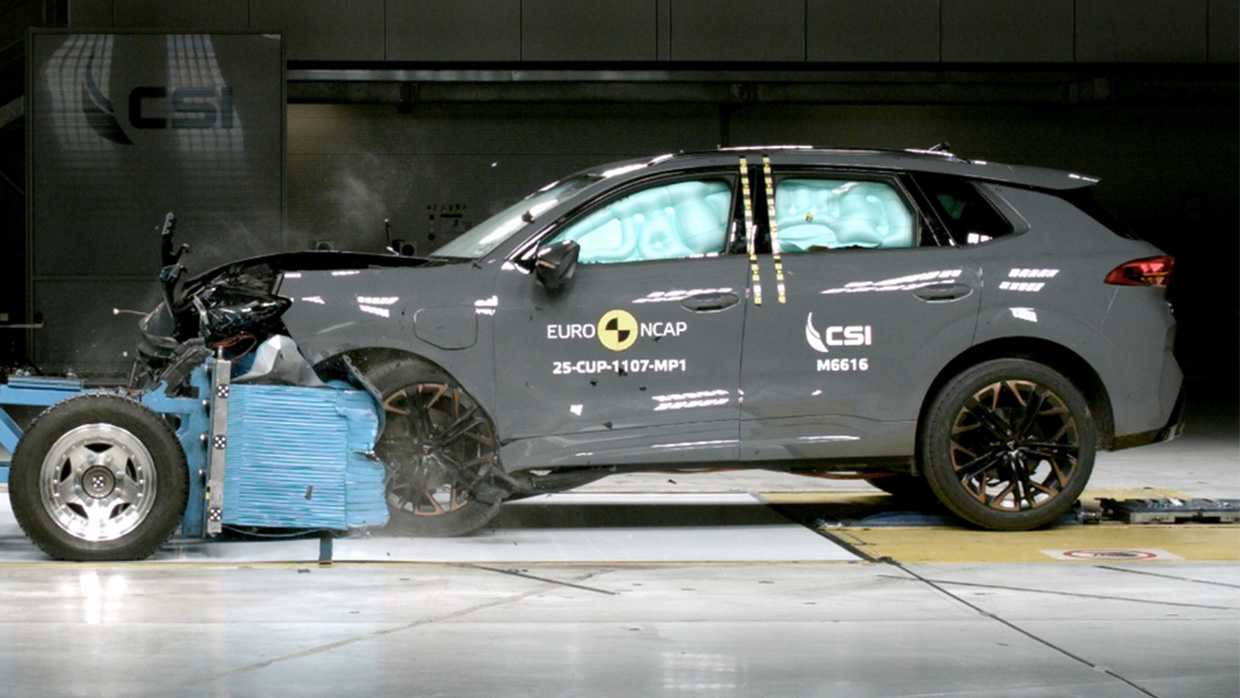
The Terramar has AEB that works when moving forward, at junctions, and in reverse via the brand’s Manoeuvre Braking technology.
We like the smooth operation of the cruise control and lane keep assist, though the presence of audible speed warnings (silenced with two taps of the steering wheel) is intrusive and must be disabled at every engine start.
What are the Terramar’s ownership costs?
Unlike some (very) mild hybrid systems, the Terramar’s 48-volt infused powertrain works effectively to reduce fuel use in realistic situations.
We managed to get surprisingly close to Cupra’s claim of 5.7L/100km for the Terramar S variant, recording 5.4L/100km on an extended highway run and just 6.8L/100km on a very sporty and hilly run.
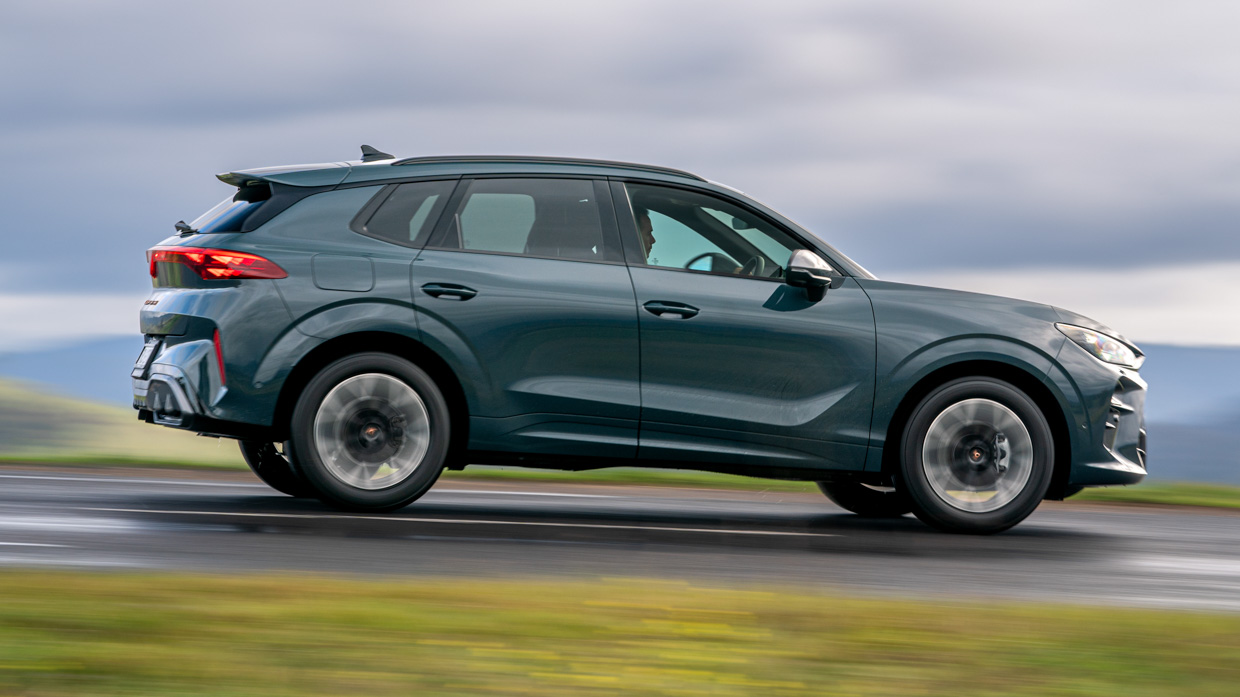
In town, where the turbo is working harder and the hybrid system has less of a chance to turn the engine off, fuel consumption does increase to about 7.5L/100km.
From its 55-litre fuel tank, our results indicate a real-world driving range of 1018km on the highway (impressive) or 733km in town.
Pre-paid servicing plans are available for the Terramar at a cost of $1490 for three years/45,000km, or $2590 for five years/75,000km.
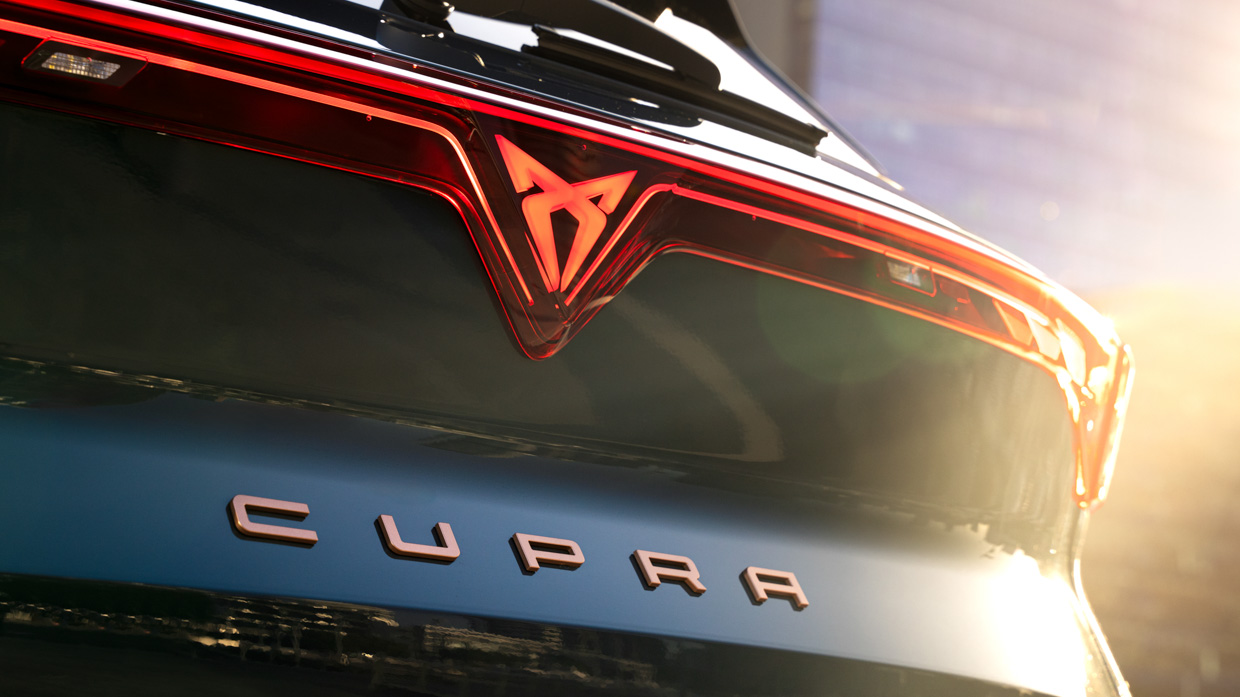
Despite being less complex to service the front-drive Terramar S does not get a discount on the pre-paid plan.
Warranty is five years with unlimited kilometres for the Terramar.
The honest verdict on the Terramar
The Cupra Terramar is not the biggest, flashiest, techiest or fastest midsize SUV around.
However, it is an amazingly well-executed, and well-balanced, family wagon that will appeal to buyers who appreciate mature driving dynamics, interesting design, and a mature technology overlay.
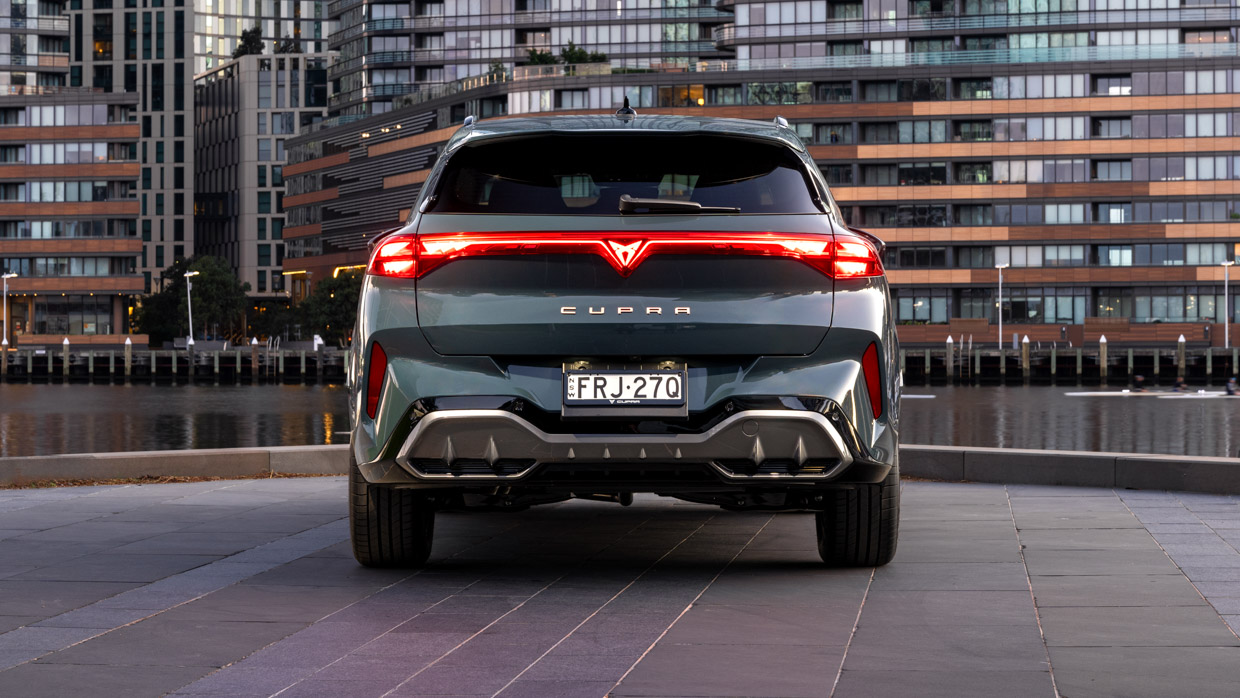
The well-known Volkswagen Tiguan hits all the same kind of buttons, but the Terramar’s slightly spicier execution appeals to us.
Cupra’s deft product planning of the Australian Terramar lineup means this is also an amazingly well-stocked SUV even in base grade.
While it isn’t the cheapest option out there, owners are left wanting for very little, with almost all conveniences and luxuries included as standard.
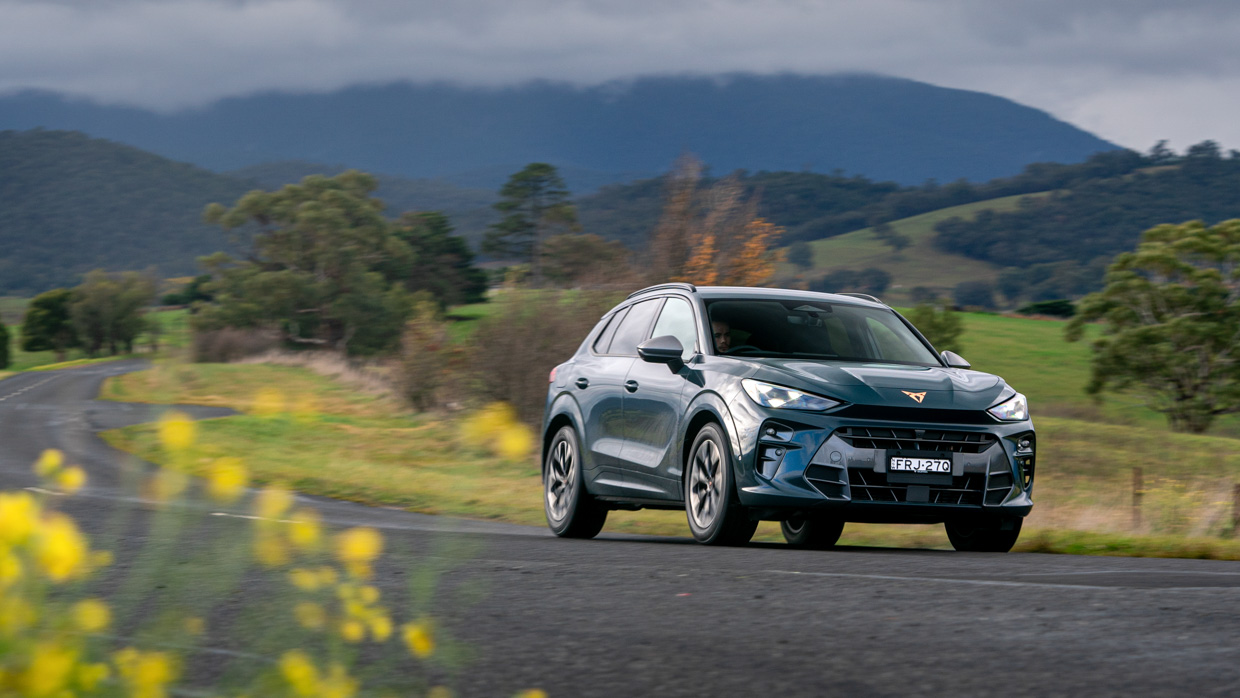
Fitment of an effective mild hybrid, turbocharged powertrain at the base level also means it’s possible to access a punchy and efficient engine without spending up on the PHEV, though one is coming soon.
While it doesn’t carry the brand recognition of its parent, midsize SUV shoppers happy to consider an offbeat option should place the Terramar at the top of their lists.
Hyundai Ioniq 9 Calligraphy 2025: Australian first drive
2 months ago

Electric six- and seven-seat SUV broadens its Korean maker’s model reach. But does the pricey electric flagship enrich or muddy Hyundai’s water?
Good points
- Nice refinement
- Big 600km range claim
- Solid dual-motor electric performance
- Premium vibes
- Want for little specification
Needs work
- Ooh, that price tag
- Polarising styling
- Lacks uniqueness inside
- Surprisingly firm ride
- No low-grade option (yet)
Hyundai Australia wants to challenge Toyota for local sales domination. (Of course, which importer doesn’t?) And according to the importer’s CEO Don Romano, its new quasi-premium electric six- and seven-seat SUV that comfortably sails north of $120,000 in almost any configuration is a key lynchpin in its bold and relatively new strategy.
The Hyundai Ioniq 9 debuts as the most expensive Hyundai ever offered in Australia, trailing closely behind the launch of Inster, the brand’s newest ‘smallest’ (circa-$40K) model. Both, says the horse’s mouth, bring breadth and depth to the local line-up.
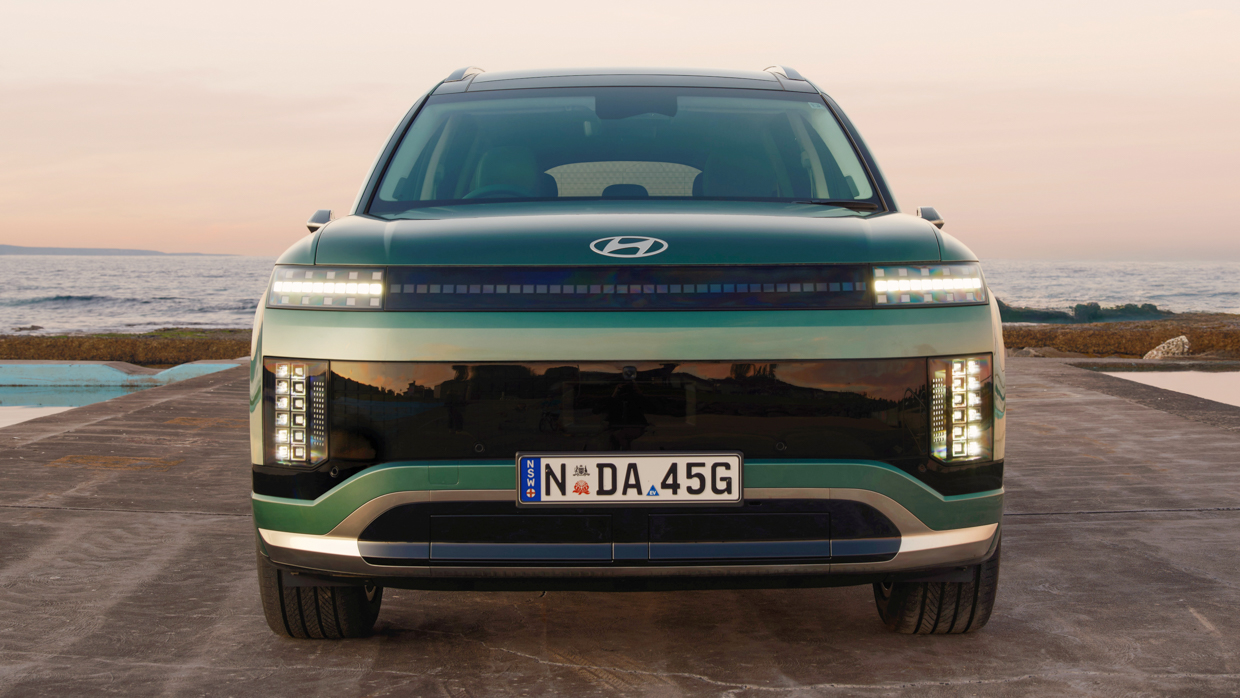
Big sellers? Doubtful. Especially the Ioniq 9. Some precedent is that the big electric figurehead from Hyundai’s cousin, the Kia EV9, hasn’t come within a postcode of its own sales aspirations in its 12 months since launch. And that’s despite the EV9’s critical acclaim and whatever brand recognition it’s brought to Kia locally.
What’s different with Ioniq 9? Design, clearly. Though the Hyundai’s bulbous, quasi-retro styling is no less polarising than the 1970’s manga-robot fetish of the EV9.
There’s range. Unlike EV9’s ambitious three-trim line-up, the Ioniq 9 lands Down Under in just a single Calligraphy guise. Hyundai has opted to go high-spec and pricey: $119,750 list for seven seats, two grand more for the six-pew ‘captains’ chairs’ format.
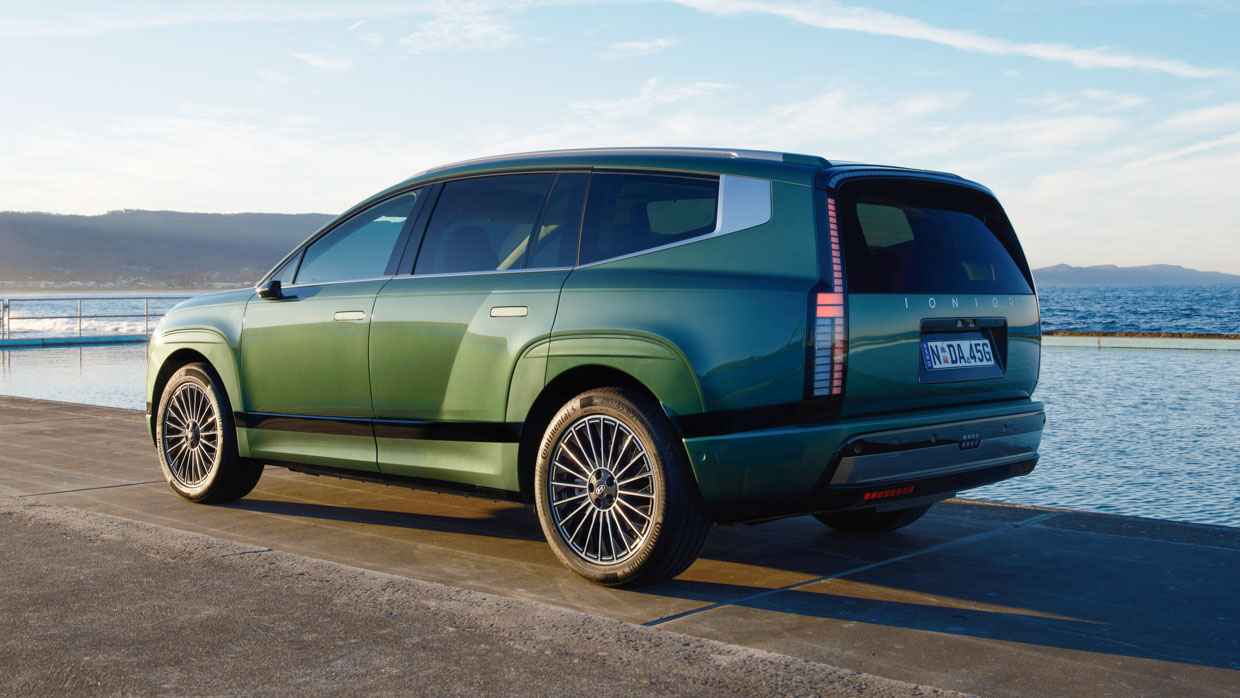
This begs many questions. Who buys a mega-buck Hyundai? Is this Hyundai pushing its brand upmarket? Does this cannibalise Genesis (and why wasn’t Ioniq 9 a Genesis from the get-go)?
And doesn’t Hyundai also offer many other three-row options — Santa Fe, Palisade, Staria — that are significantly lighter on the hip pocket?
All of these might be inconsequential if the Ioniq 9 Calligraphy is really good and really different, bringing unprecedented newness, trickiness and slickness to the Hyundai DNA (in ways that perhaps the Ioniq 5 did on debut a few years back).
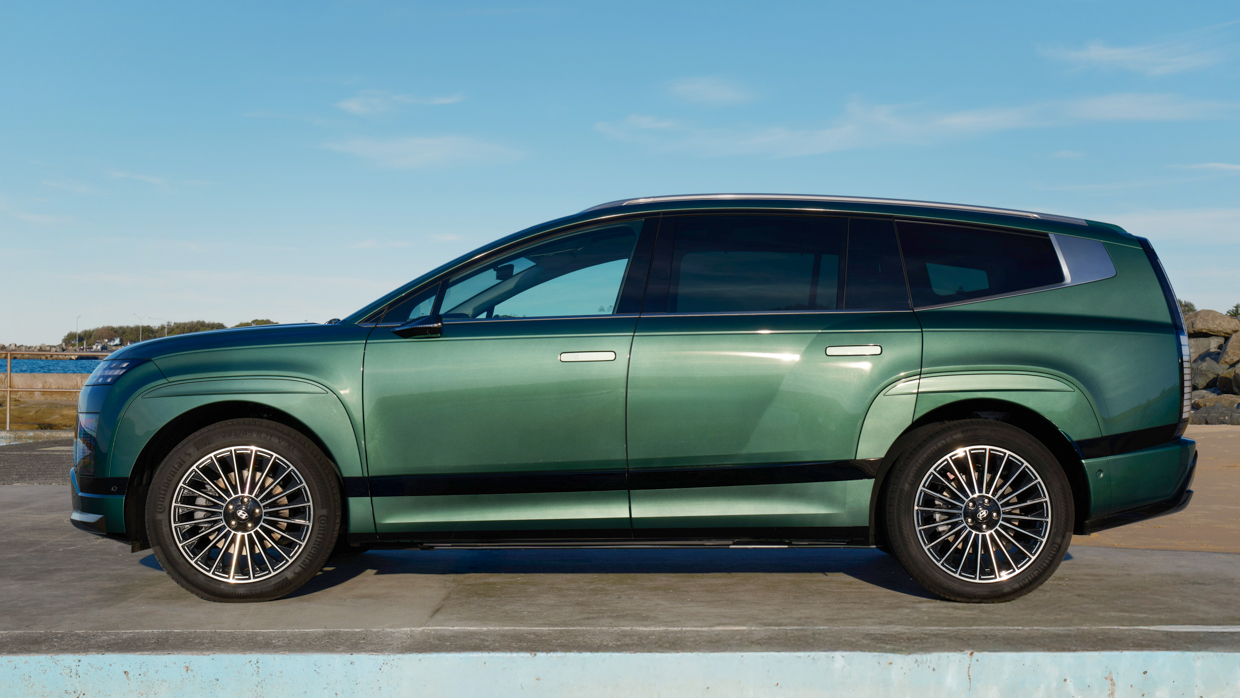
Styling? With no disrespect, the Ioniq 9 might appear, stylistically and in the flesh, like a Kia EV9 that crashed through the Ioniq 6 studio en route to the Santa Fe’s interior design department…before being rear ended by a Volvo.
It looks classy and modern yet strangely unremarkable. Those stolid diamond-cut 21-inch wheels, in your reviewer’s eyes, are not Hyundai’s most upmarket work.
Claim in and the interior is very nice, though it’s also very Ioniq-by-the-numbers and achingly reminiscent of Santa Fe in places. It’s a touch classier and richer in execution than the latter, and a peg below the sort of opulence Hyundai’s premium off-shoot Genesis mints in its own models, with presentation and panache pretty much where it ought to be.
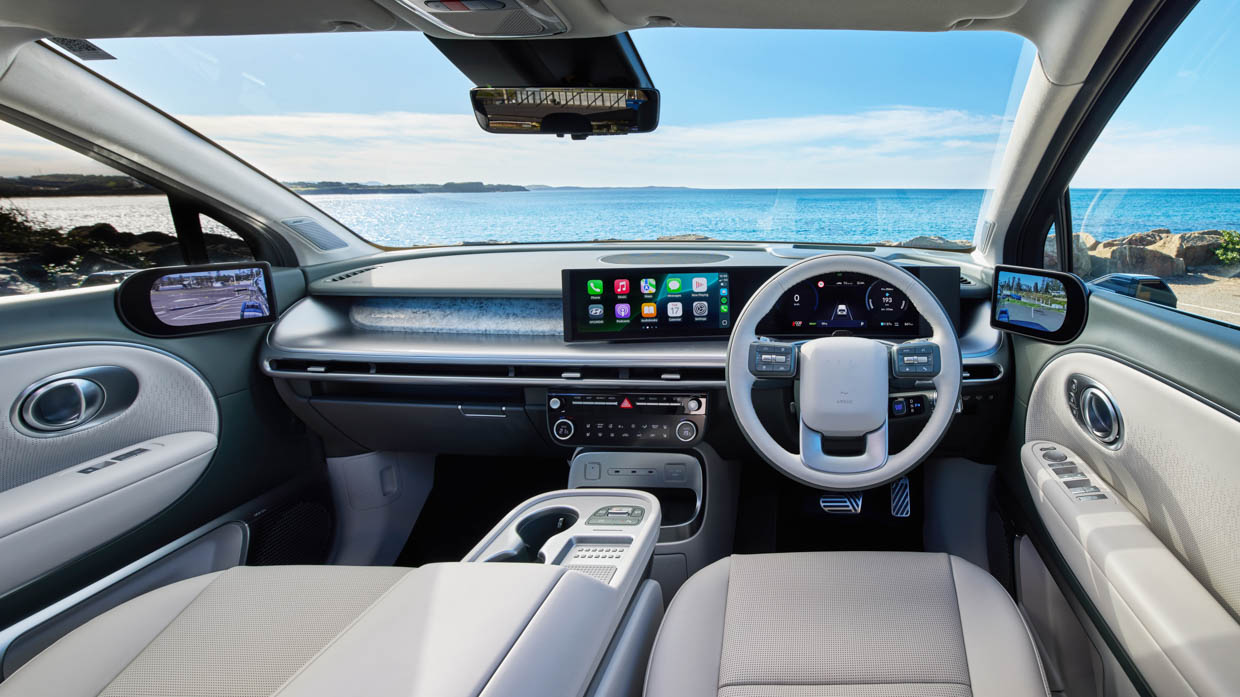
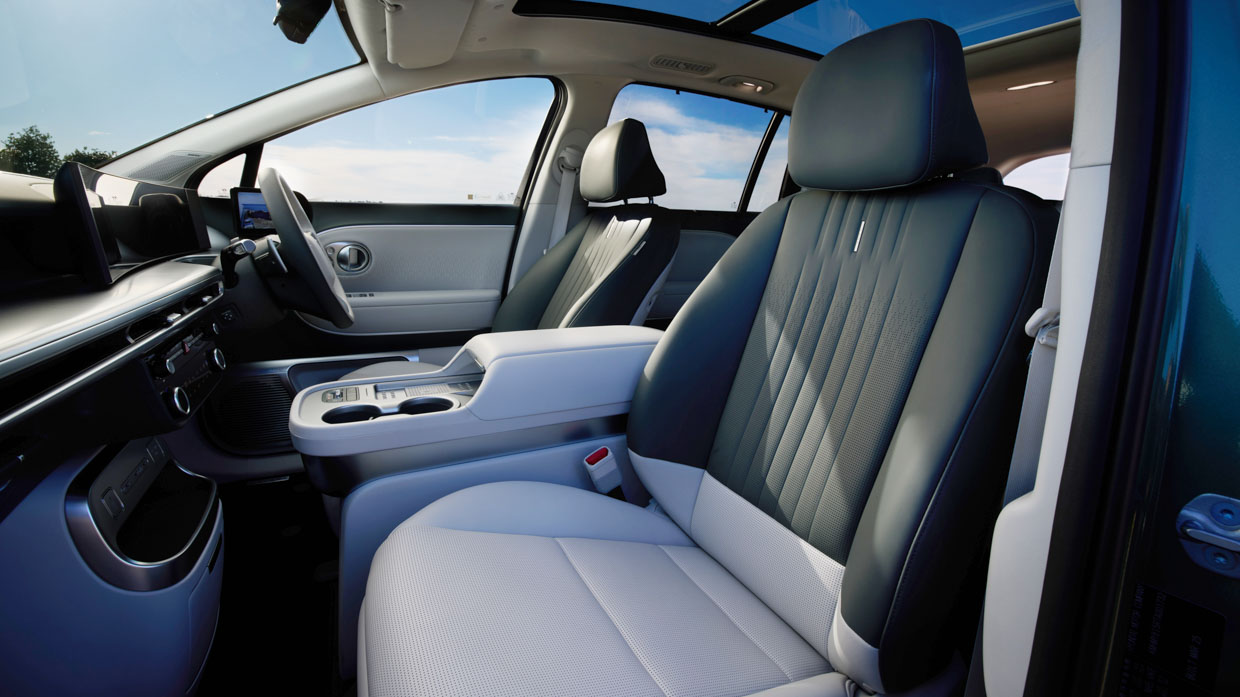
The problem is that, bar the questionable real aluminium dash inserts — adjacent to some very plasti-chrome looking and feeling dash fascia trim — the cabin of the $120K super-Hyundai is largely derivative of other, vastly more affordable models in the brands line-up. Minor details apart, there’s not a lot new, or at least not much that presents as much.
Still, it delivers the austere luxury as promised on the tin. The Nappa leather-appointed 16-way front seats — with driver massage functionality — fit the hefty bill, complimented with suede-like headlining and subtle frosted silver highlights — no garish carbon-fibre here. How everything blends in together is very neat and presentable.
All available in four different colour themes to match with any one of ten different exterior colours. Hyundai expects some buyers to order preferred combinations — delivery times, it promises, are just a few months — though we expect dealer stock might mix conservative hues.
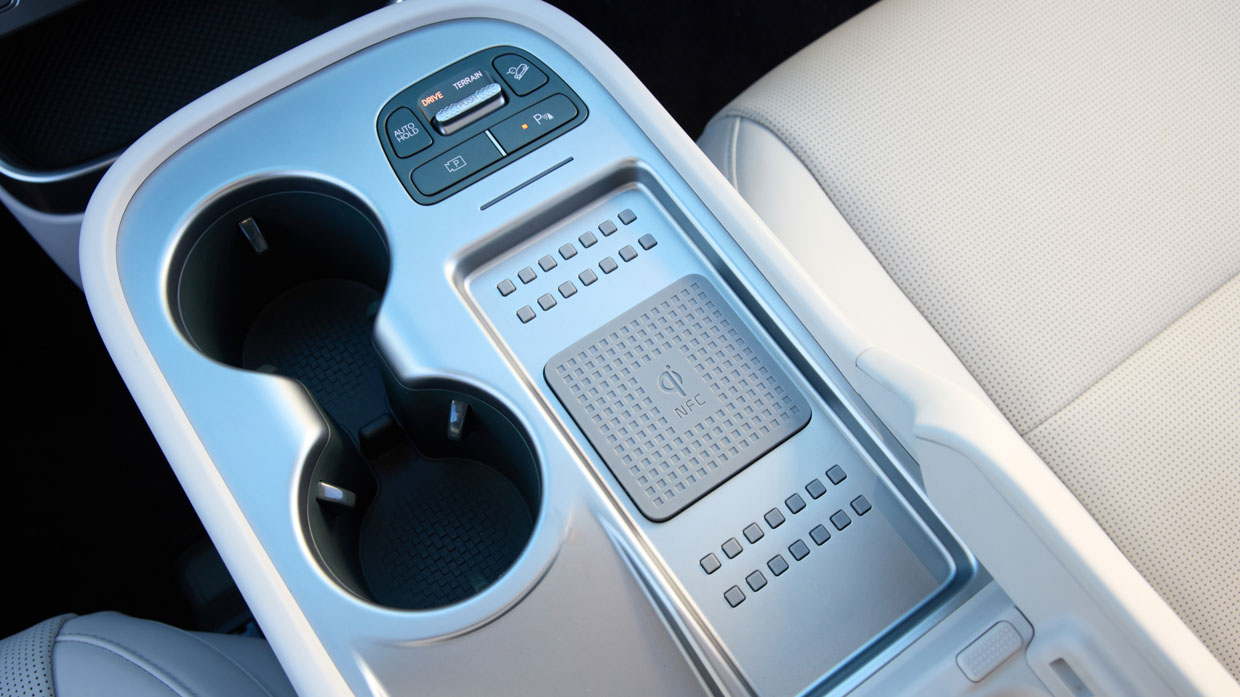
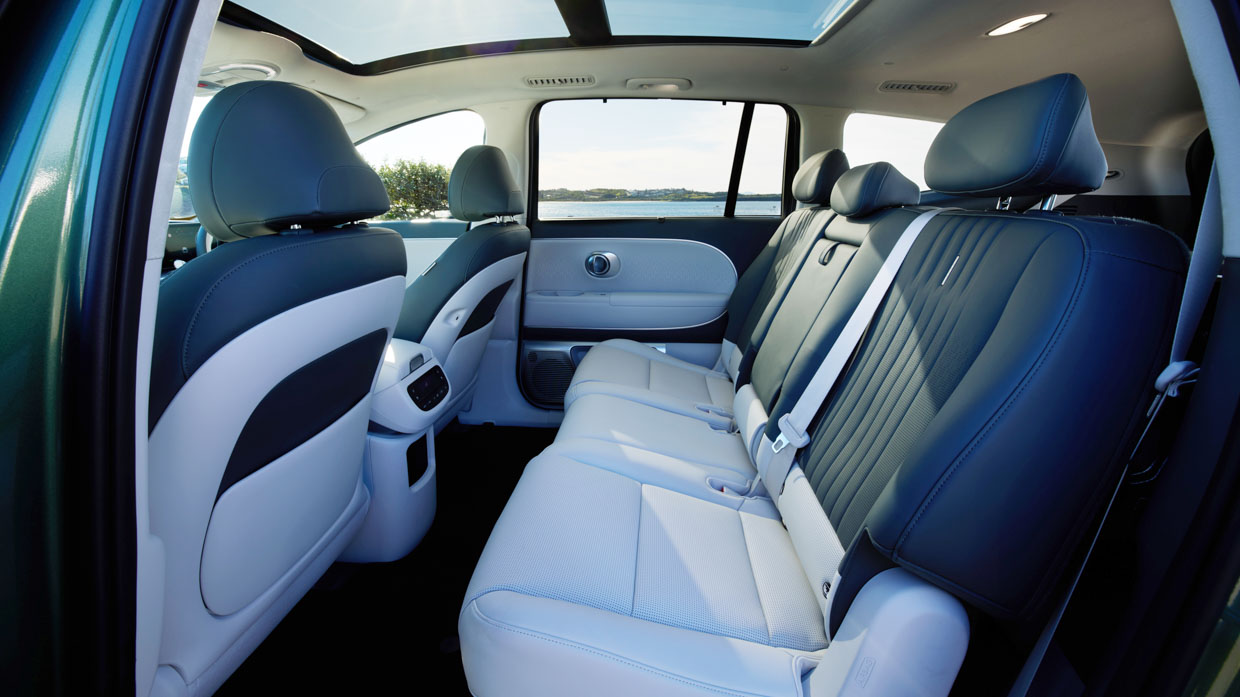
On that, an extra $750 sting for metallic paint at this price point is a bit of a rub, while it’s $1000 for matte paintwork (the silver matte looks particularly fetching in the metal). It’s an added $2000 for the six-seat option, while the tricky yet functionally woeful digital wing mirrors add another $3000.
Tick options and the Ioniq 9 blasts triumphantly north of $130K on road.
Dual 12.3-inch screens, dedicated HVAC button and dial control panel, column-mounted rotary ‘direction selector’ — all tried, true and familiar stuff seen in more affordable models. There’s ample if not overly generous storage abound and the six-seat version brings a nifty sliding centre console — with two-way lid — to the front row.
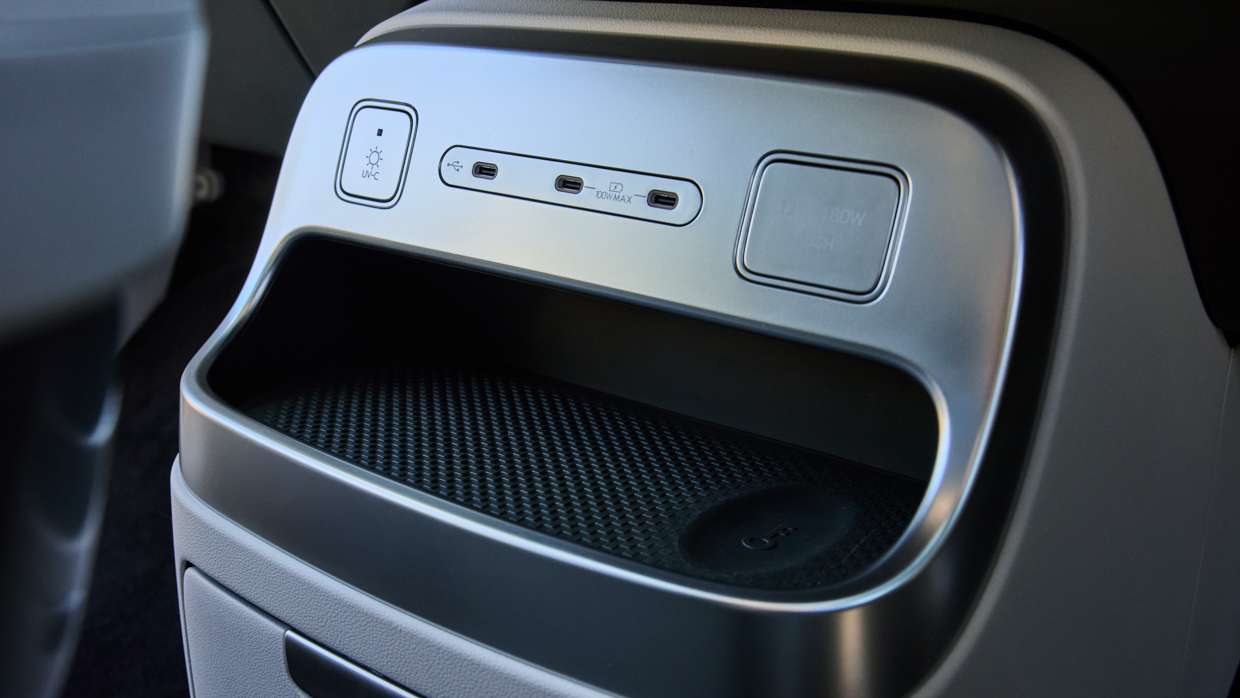
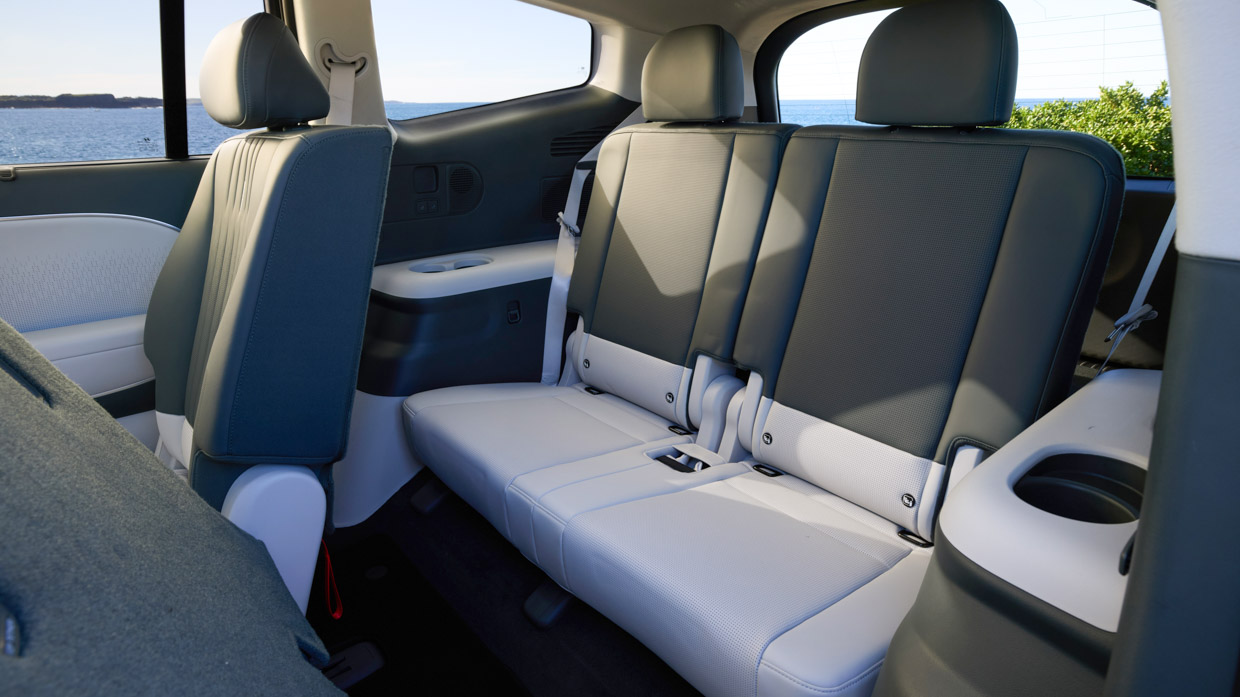
Some of the Ioniq 9 tricks, new connected features such as the Digital Key 2 where you can download a virtual entry and start-up key to your phone or up to 15 different devices, are neat. Others, like the UV-C phone sterilisation, seem more baked into the package in order to sprinkle added value to help justify the heady price tag.
Row two is very roomy and airy regardless of whether it fits a seven-seater’s bench or six-seater’s captain’s chairs. And with the electrically stowable third row the Ioniq 9 makes a helluva roomy and commodious five- (or four-) seater, as the 338-litre boot expands to a whopping 908 litres with an almost completely flat load space.
The flat rear floor, power reclining seat backs and USB-C outlet perched in the front-seat sides are all fetching luxury touches, though a strange miss is that the seven seat’s flip-side for best access to row three is actually driver’s side rather than (the safer) kerb side. Row three space is decent if certifiably kid-oriented for anything more than short trips.
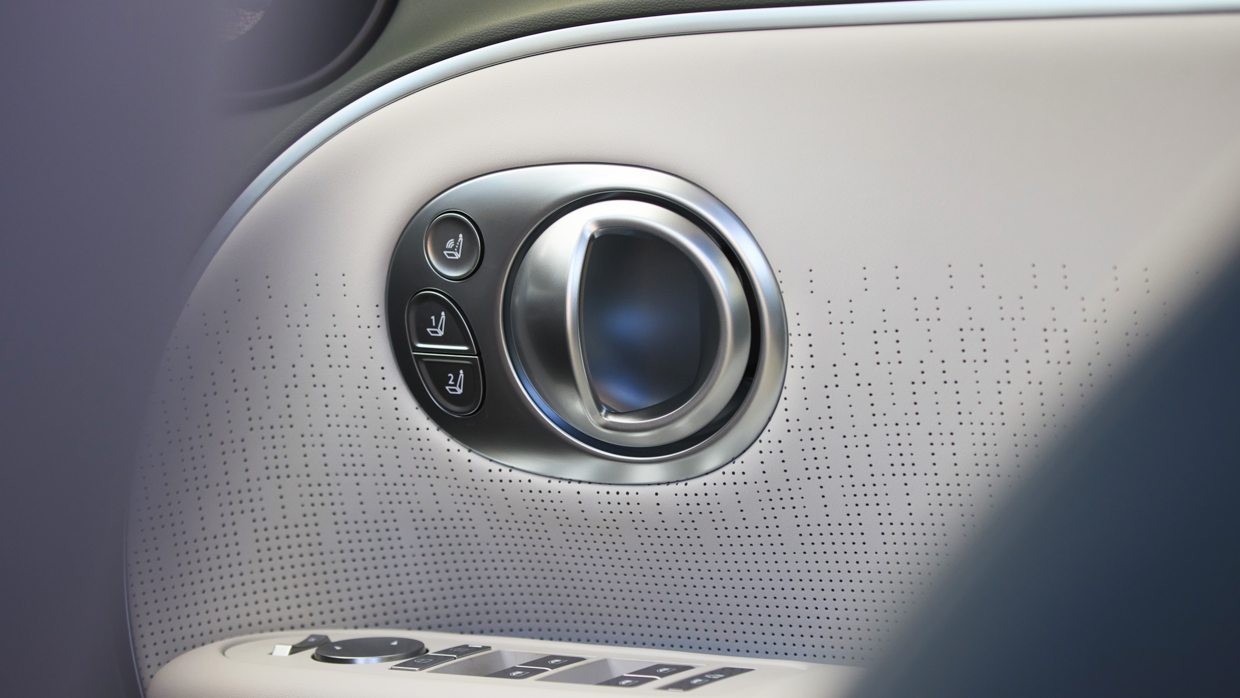
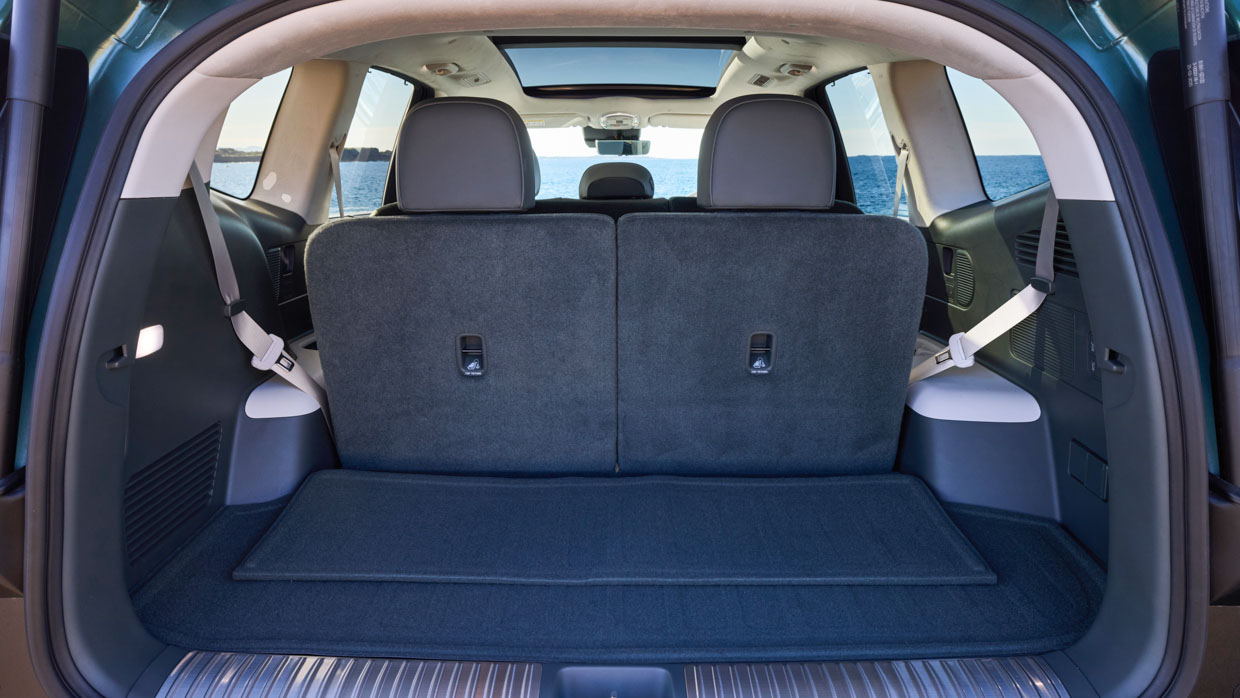
Some of the less-obvious luxuries seep into the on-road experience, such as the active road noise cancellation — a first for Hyundai. Subtler still are the sound absorbing pads in the tyres, and the three-layer sound deadening material in the wheel houses. These mostly hidden details are real Genesis-level luxury stuff.
The drive experience is…unremarkable. Or perhaps as remarkable as you could expect from a 2.75-tonne-plus five-metre behemoth that fast approaches its 3320kg GVM fully loaded with adults.
While unremarkable, the big electric is fully competent, as demonstrated on the road course selected for the Australian launch program starting from the guts of Sydney (at Hyundai HQ) and threaded north along the lesser travelled tourist routes up to the Hunter Valley winery region. And back along the Newcastle freeway.
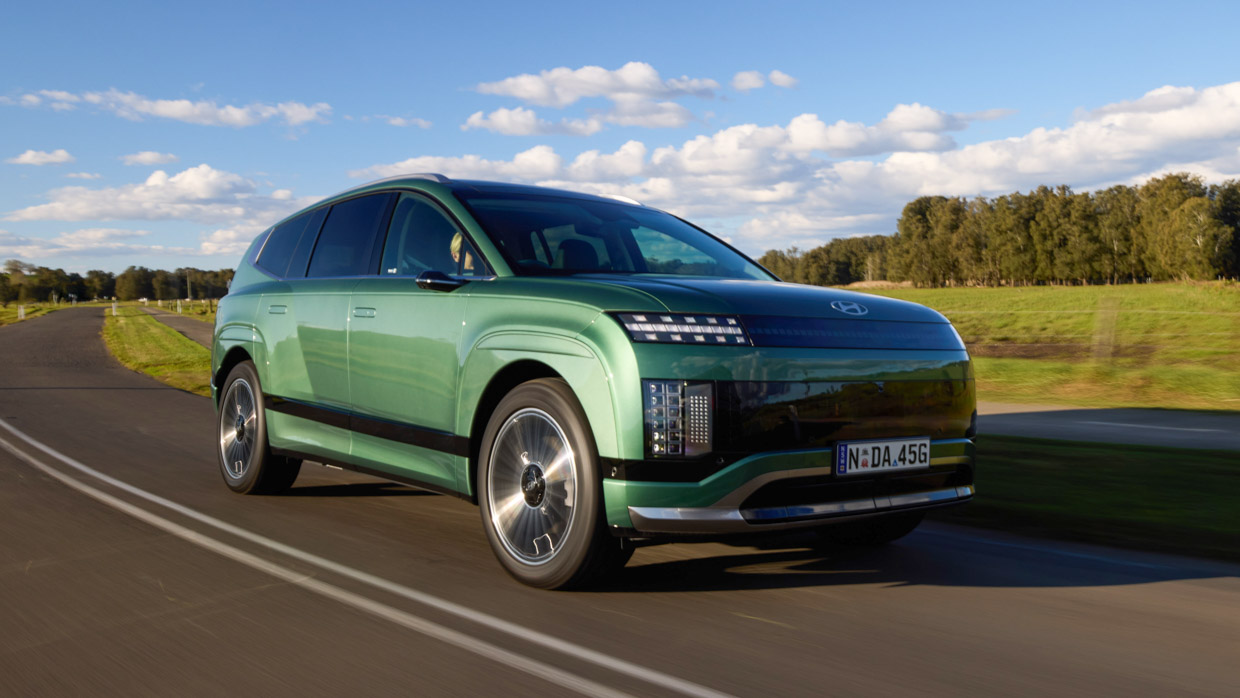
The Ioniq 9’s 800-volt E-GMP architecture fits a whopping 110.3kWh battery — Hyundai’s biggest yet — and a promise of 600 kilometres of WLTP driving range.
On test, while hardly punted for economic benefit and with around 130 kilometres of undulating highway driving, a combined consumption of 20.8kWh is pretty respectable for such a hefty EV package. Call it 530km as tested, driven without much sympathy.
It goes well, too. Two-up and with a moderate amount of luggage — not much change from three tonnes of mass — the Ioniq 9 is brisk off the mark and urgent when called to arms on a roll or when overtaking. All rounded and pliant and oh-so cooperative to the driver’s right foot inputs.
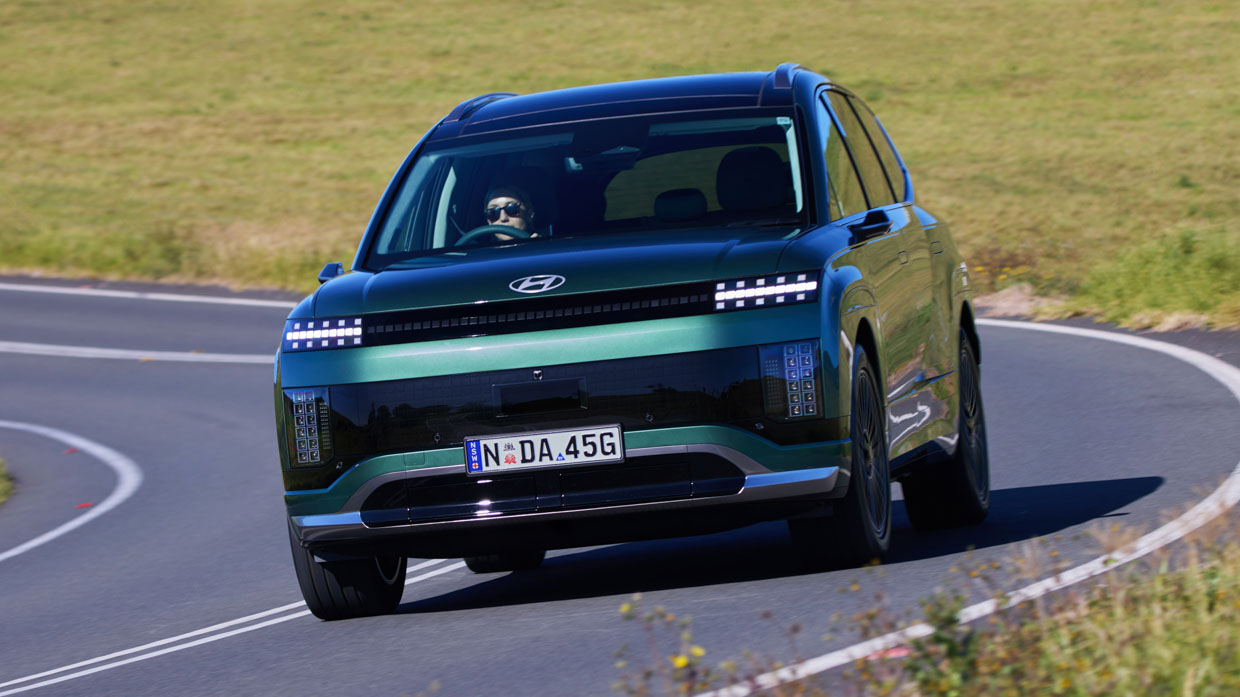
The powertrain outputs 157kW and 350Nm at each axle, both single speed, for a total of 314kW and 700Nm that proves both ample and utterly befitting for the big, luxury theme.
This is a rig that balances performance, drivability and outright range very nicely indeed, aided in part by Hyundai’s well-proven, simple-yet-effective paddleshift regen system.
At maximum, it’s effectively one-pedal response, at its lightest, there’s virtually no motor braking effect whatsoever. Choose your stepped setting for right foot comfort and conditions, or pluck the left paddle in faux-downshifts to curtail pace entering backroad corners. Neat!
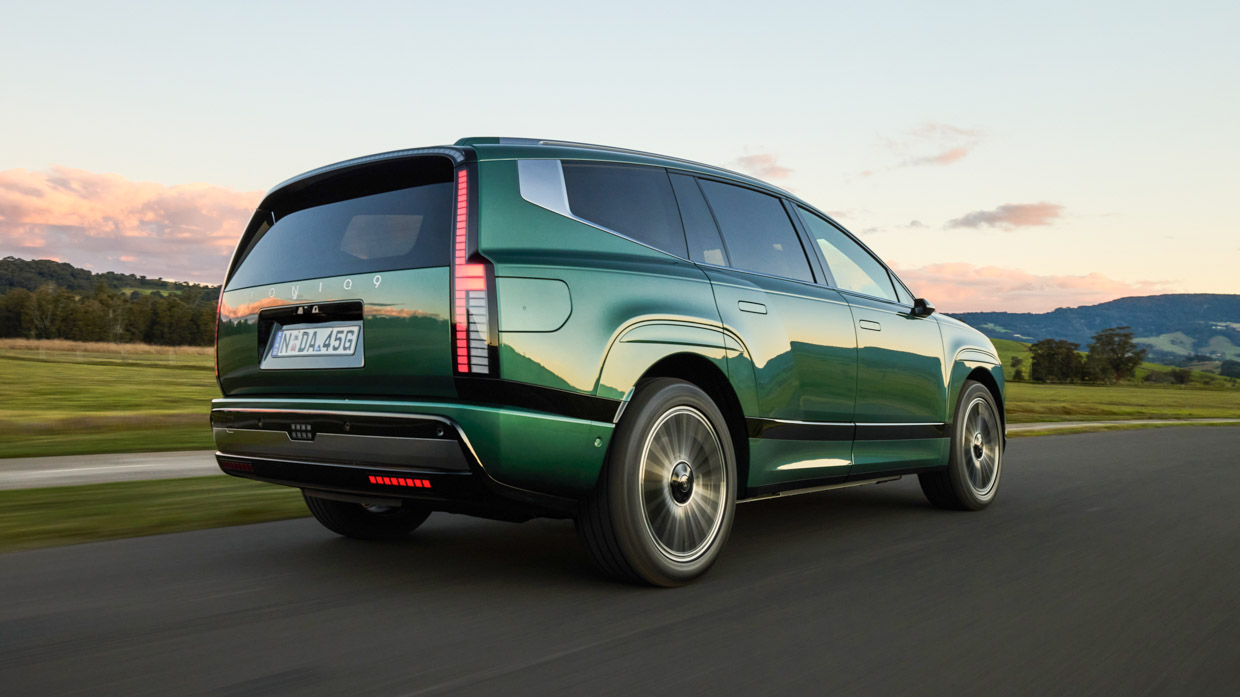
Where physics wins one over on the electric three-row SUV is in ride. Suspension is fully independent, steel sprung and with self levelling rear dampers for the multi-link rear. And its GVM with seats filled is around that of a one-tonne dual-cab ute teetering on the edge of its payload capacity.
What’s miraculous is that the electric SUV’s ride is about seven quantum leaps nicer and more compliant than any ute you could possibly name.
Still, the gross mass the suspension needs to support, combined with the huge 21-inch rolling stock, means that smaller, high-frequency bumps and sharp imperfections are felt more conspicuously than it might otherwise be with an air-suspended design.
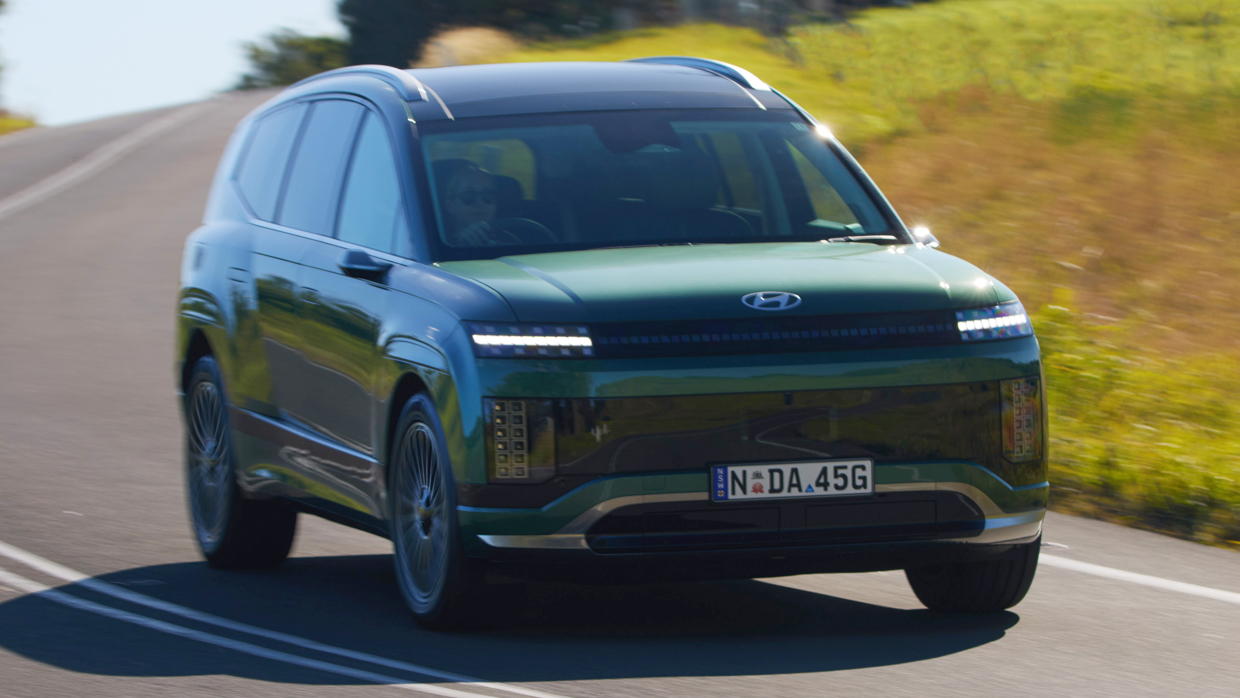
Similarly, the hefty weight lugged around blunts the dynamics. While not exactly ponderous, the three-row SUV demands a degree of circumspect guidance across sweeping backroads, given it easily drums up serious road speed, near silently and therefore somewhat deceptively.
But it is very comfy, near serene in its manner and properly un-fatiguing. This is Hyundai doing semi-premium luxury at the carmaker’s best, with a solidity and refinement that betters the well-regarded Santa Fe and is nigh on par with Genesis-like expectations.
And it’s primarily what the dizzying price tag is buying into.
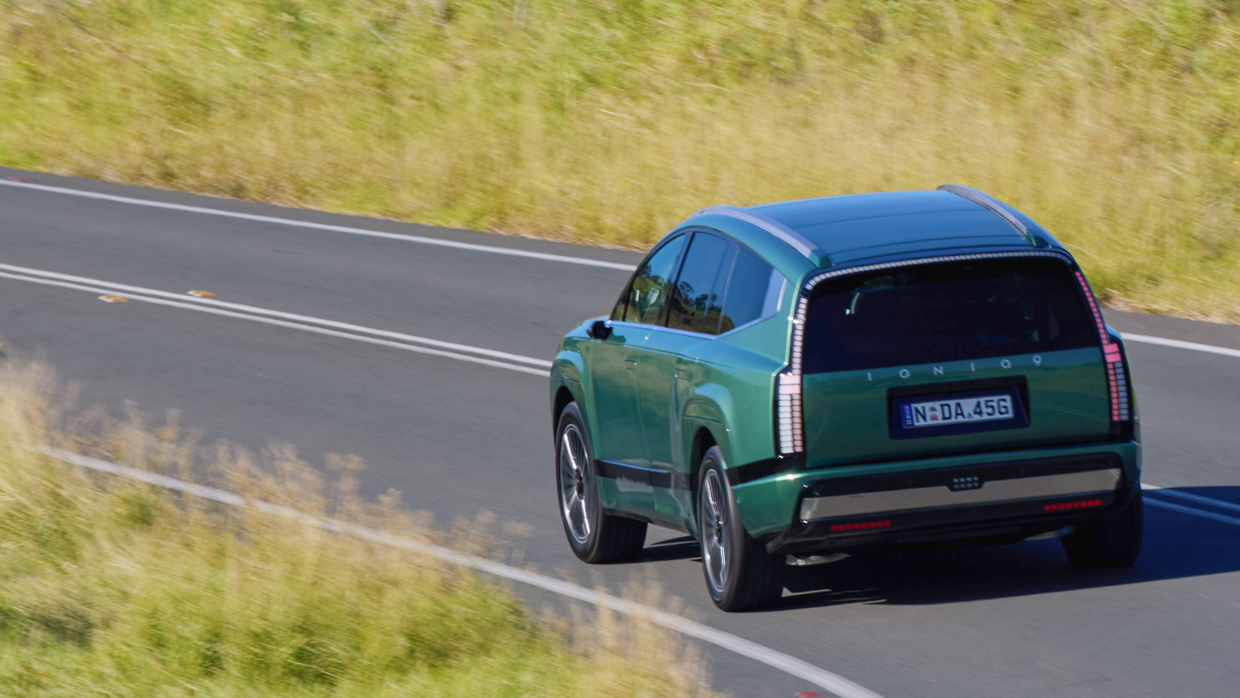
While the Ioniq 9 makes a neat big-dollar bookend to Hyundai’s range expansion strategy — “ICE, PHEVs and HEVs, from luxury to entry [grades],” HMCA says — with an incremental premium lift across the board, it’s both a good vehicle and tough sell on singular merit.
Hyundai Australia expects that buyers will largely be existing EV owners looking for a step up, rather than a perceptible ‘step backwards’ to internal combustion or hybridisation. That’s a pretty select group.
With EV adoption still dragging along in relative infancy in Australia, it’s tough to see many three-row family-hauler shoppers stumping up the considerable premium for Ioniq 9 over Hyundai’s — or others’ — six-, seven- and eight-seat ICE-based alternatives.
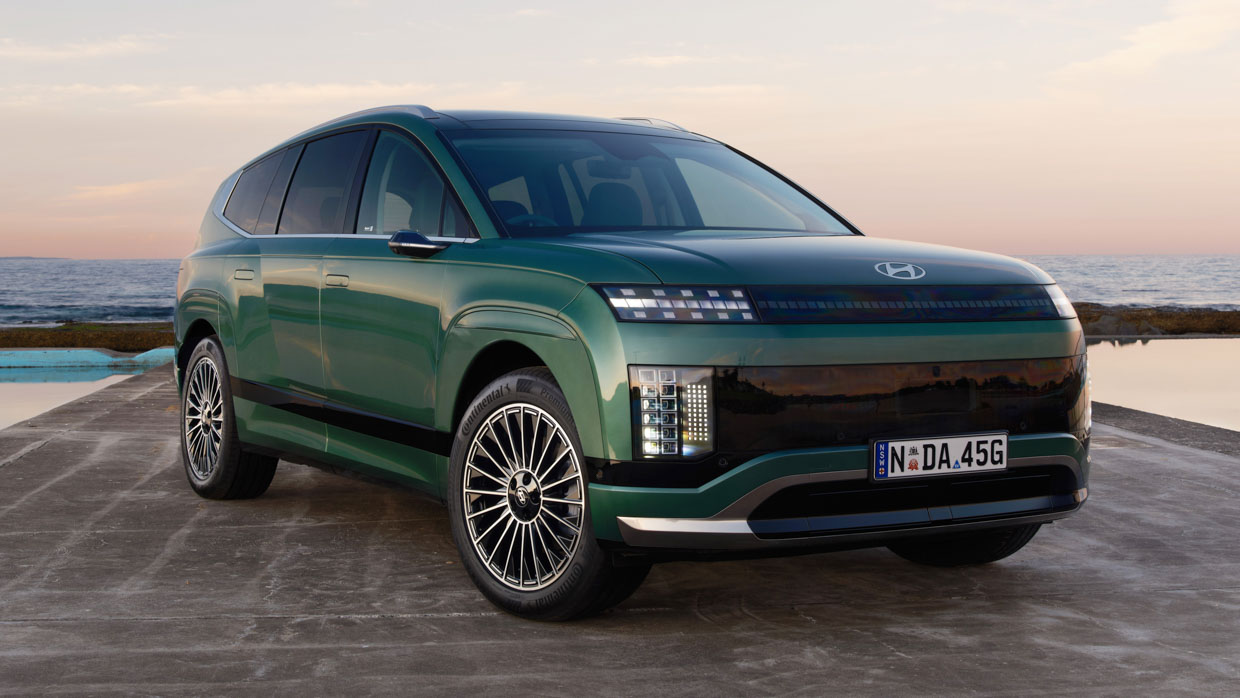
The upcoming (Q4 2025) hybrid Palisade is the clear and looming elephant in the showroom. It’s likely to be $40K, or even perhaps $50K, more affordable in like-for-like Calligraphy trim. It’s a handsome rig, too.
The Ioniq 9 Calligraphy feels primed, priced and positioned for a world where EV uptake might’ve been for more prolific. The right car at the wrong time, and in a less-than-ideal climate? Perhaps.
And perhaps an arguably shrewder move might have been to offer a more cut-priced specification sat more comfortably — and attractively — nearer the price of the top end of the line-ups of Palisade, Santa Fe, Staria and rivals’ logical competitors.



